Industry
- Details
- Written by: Quintus Potgieter
In January 2019, the Consumer Electronics Show kicked off in Las Vegas, Nevada. And it seems mechanical engineering, propped up by artificial intelligence, is the talk of the town.
Mercedes-Benz rolled their latest marvel of mechanical engineering out on the floor, touting some impressive artificially intelligent add-ons. The car’s name is the 2020 Mercedes-Benz CLA 250 Coupe, and the AI software is called MBUX (Mercedes-Benz user experience).
The company’s presentation kicked off calling the CLA ‘The most bling-bling gadget’ at the expo. You can even talk to the car by calling out the words, “Hey Mercedes,” and follow it up with a command you want the car to perform - like rolling up the windows. It also has hand gesture recognition.

There are also semi-autonomous features that help the car drive; further propelling the car industry into a self-driving future. Moving to an artificially intelligent car, empowered by software, is a watershed moment for automobile engineering - it shows that car companies are becoming far more multifaceted.
It also signals an interdisciplinary move in the automobile industry, bringing many engineering industries into one. But, the Head of Group R&D at Mercedes-Benz, Ola Kallenius, says the company itself is also changing the way it operates as a company. Speaking at CES 2019, he said:
“Speaking of the future, we show very clearly where the technologies of our company are heading. Our vehicles are now platforms of digital progress and we operate as a software company with more flexibility and adaptiveness, with agility to do developments and customer requirements [faster]. Our goal is to build trailblazing mobile devices that enhance our customers’ lives.”
The car can also integrate with wearables. The smartwatch informs the car how its driver is feeling. Consequently, the car can then offer massages and hotter or cooler seats. Using the heart rate monitor will also fill the car in on how stressed the driver is. The MBUX system was designed in conjunction with Nvidia. This further highlights how engineering industries that may have previously existed independently, now regularly collaborate to create new products in the future.
Real Robots
Humanoid robots seemed to attract the most journalistic cynicism at the CES event this year. Purportedly the robots at the 2019 expo were a little disappointing; lacking the expected sophistication or improvement when compared with the 2018 expo. It seems that consumer robots are still a bit too clunky to be considered ready-for-market.
The online publication, The Verge, believes that the delivery robots were the most impressive and with the most future-proof uses - namely, delivering items or food to the consumer.
Pudutech had a robot rolling around the CES floor named the HOLABOT. It is equipped with AI speech and face recognition functionality and is specifically designed to deliver food to a customer inside a restaurant. Pudutech is the company looking to be the leader in delivery robots and self-driving low-speed robots. And their multi-robot deployment system will help - it enables one hundred HOLABOTs to work at the same time.
The robots that were highly regarded at CES 2019 may indicate which ones will see huge corporate and consumer uptake (the first cousins of robots like the Roomba vacuum cleaner).
Works Cited
Eisenstein, Paul A. “Mercedes' New CLA Coupe Loaded with High-Tech Extras in Clear Pitch to Millennial Luxury Buyers.” CNBC, CNBC, 9 Jan. 2019, www.cnbc.com/2019/01/09/mercedes-cla-coupe-loaded-with-high-tech-extras-to-lure-millennials.html.
Vincent, James. “The Five Types of Robots You Meet at CES.” The Verge, The Verge, 9 Jan. 2019, www.theverge.com/2019/1/9/18175168/ces-2019-robots-best-worst-delivery-butler-tablet.
- Details
- Written by: Quintus Potgieter
Pearlitic steel, or pearlite, is one of the most durable materials in the world. This microstructure occurs in steel and can be made into steel wire.
You might have seen these wires bundled together into ropes for suspension bridges or steel cords for tire reinforcement. They are also prevalent in piano wires.
Kanazawa University students in Japan have been studying its atomic structure and have made a few first-time discoveries. They hope the atomic properties present in pearlite could be applied to newer materials to ensure bridges and buildings sustain less damage during earthquakes.
In their published findings, titled ‘Proposed engineering method could help make buildings and bridges safer,' the researchers report that they were able to ascertain the distance between locations in nanolayer interfaces in pearlite. The university’s news website writes:
“Perlite is made of alternating nanolayers of cementite and ferrite. The cementite helps make it strong, while the ferrite helps make it ductile. However, until now researchers did not know exactly how the two worked together to give pearlite its special quality, or better yet, how to control their working together to engineer an even better material.”
The researchers discovered that the disruptions, or dislocations, in the arrangement of atoms along the interface between a cementite and ferrite layer protect the layers from fracturing or stretching or compression.
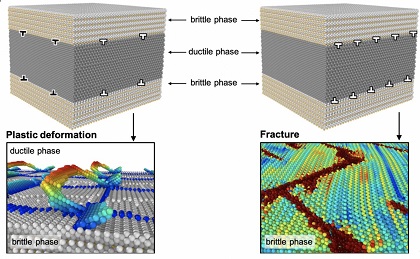
Pearlite is often used in the construction of suspension bridges — it helps the bridges withstand shaking, and also supports a lot of weight.
The researchers studied how the material performs under stress. They found that pearlite prevented cracks from forming and spreading at the atomic level. Therefore, its elasticity is guaranteed.
These findings are particularly pertinent to civil engineers in countries affected by seismic activity.
For example, Mexico City in Mexico is located atop an ancient lake. Once an earthquake occurs, the sand and clay sediments in the lake intensify the severity of the shaking.
This leads to immense damage.
With these new pearlite findings in Japan, building materials could be strengthened to withstand severe earthquakes.
Now engineers are equipped with the knowledge of the dislocations in the nanolayer interfaces of pearlite, they can begin experimenting with ways of transferring that atomic makeup into other materials.
Works Cited
“Proposed Engineering Method Could Help Make Buildings and Bridges Safer.” ScienceDaily, ScienceDaily, 17 Jan. 2019, www.sciencedaily.com/releases/2019/01/190117102359.htm.
“金沢大学.” 金沢大学へ移動, www.kanazawa-u.ac.jp/latest-research/64033.
- Details
- Written by: Quintus Potgieter
National Aeronautics and Space Administration (NASA) has been working on nano-electrofuel (NEF) flow batteries for electric aviation.
This means they could eventually power aircraft with non-explosive liquid rechargeable batteries.
The development of these flow batteries is being done by the Armstrong Flight Research Center's Aqueous Quick-Charging Battery Integration for Flight Research (Aquifer) within NASA. The aerospace company has always been innovative in the flow battery space — they invented a functioning flow battery back in the 1970s.
NASA says the flow batteries they are developing will have a higher energy density than solid lithium-ion batteries. However, there is a debate as to whether liquid batteries are better than solid-state batteries, particularly when it comes to electric vehicles.
Liquid vs. solid-state
Lithium-ion batteries are made up of liquid electrolyte solutions that utilize an anode and cathode system. A solid-state electrolyte results in a smaller battery with a higher energy density, using a lithium metal anode.
In the electric vehicle industry, liquid-based lithium-ion technology is being called into question. This is a result of fires that have occurred due to the bigger battery banks and the flammable liquid within the cell. Consequently, the industry is starting to pay a lot more attention to solid-state technology.
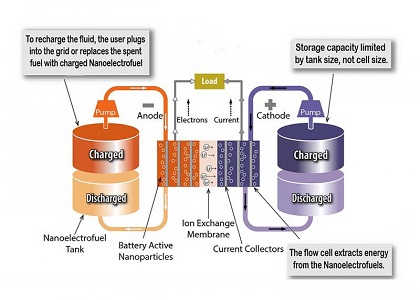
Solid-state batteries would be less prone to leaking or bursting into flames. They are also considerably smaller than liquid-based batteries. Researchers are indicating that solid-state batteries with a lithium metal anode might enable electric vehicles to travel longer distances than they already do with liquid-based batteries.
However, it seems the car manufacturers are struggling to find a solid-state solution that works for them.
But some companies are going ahead with developing Vanadium Redox Flow batteries — an energy storage technology that organizations like NASA are looking into. The other benefit of the redox battery is that it can be recharged faster than a lithium-ion battery.
The Vanadium Redox Flow batteries are liquid batteries, but unlike normal liquid cells, the electrolytes are housed in tanks outside the cell. These cells work by pumping the liquid into a stack of cells, where the electromechanical reaction takes place and electricity is produced. And word on the street is that they are less explosive than traditional liquid batteries.
NASA Electrical Engineer, Kurt Papathakis told media:
“We have demonstrated multiple recharge cycles and seen minimum to zero degradation. Also, unlike Li-ion batteries, NEF does not pay a penalty in cycle life for charging above 80-percent capacity or discharging below 20 percent.”
Cobalt, lithium, and vanadium are subsequently the most in-demand elements seeing a global demand in the energy storage industry.
Taking to the skies
It's not only NASA that are looking to power electric aircraft in the sky...Rolls-Royce is too. The company plans to launch an all-electric aircraft in 2020. They are also eyeing a world speed record for the plane — the engineers are looking to design an electric plane that can reach a top of speed of more than 300mph. They’re calling it the ACCEL.
The current title holder is the Siemens Extra Aircraft 330LE. It currently boasts the world's most powerful electric motor in an aircraft. It is powered by battery packs and is a joint engineering venture with Extra Aircraft, Siemens, MT-Propeller, and Pipistrel. The company reckons that passenger flights in small electric flights could happen as soon as 2025.
Rolls-Royce is working alongside a company named Electroflight and YASA on their project.
The most important benefit of battery-powered aircraft will be that they emit zero emissions.
Matheu Parr, the ACCEL Project Manager for Rolls-Royce said:
“This plane will be powered by a state-of-the-art electrical system and the most powerful battery ever built for flight. In the year ahead, we’re going to demonstrate its abilities in demanding test environments before going for gold in 2020 from a landing strip on the Welsh coastline.”
Works Cited
“Introducing ACCEL.” Rolls-Royce, www.rolls-royce.com/media/our-stories/innovation/2018/introducing-accel.aspx.
Robinson, Isabelle. “Using Liquid Batteries for Electric Aircraft.” AZoCleantech.com, AZoCleantech.com, 18 Jan. 2019, www.azocleantech.com/article.aspx?ArticleID=843.
- Details
- Written by: Quintus Potgieter
The World Economic Forum is inviting other industrial companies to study nine world-leading smart factories they have identified as having the latest in automation technology.
Not surprisingly, these ‘manufacturing lighthouses' as the WEF call them, utilize the Industrial Internet of Things, and in their opinion show the most promise in Fourth Industrial Revolution implementation.
WEF are helping build seven more to join the other nine already in existence.
Factories are becoming far more automated with communications and networking technologies that can integrate with modern day smartphones and remote technologies. The world has witnessed the advent of 4G in the last few years, which transformed the speed of access to the internet and created interconnected networks within factories.
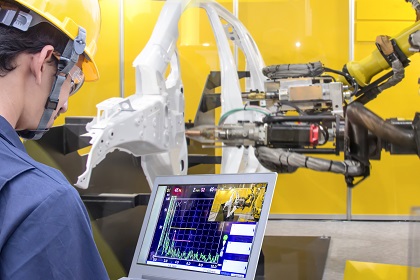
But 4G's successor is here, and it is unsurprisingly called 5G. The technology is boasting more bandwidth and faster speeds.
However, rolling it out across the world is going to take the building of some new infrastructure.
Nonetheless, many novel applications for 5G have been touted in the media. These include connecting all vehicles on the road to an autonomous driving telecommunications server, hosting entire virtual reality worlds that users can log in into, speedy mobile internet infrastructure, and industrial automation.
Now, countries are racing to be the first to implement the new technology. Chinese companies Huawei and ZTE appear to be frontrunners in the testing of 5G technologies. Qualcomm is one of the American companies making progress designing modems and technology to process the signals broadcasted by 5G antennas.
Ericsson, a company also dedicated to shaping the future of mobile broadband internet communications, says that before 5G is used on products like smartphones and home-based internet, it will go to the factories. They write:
“In our market research we have identified the most crucial manufacturing use case categories that 5G will enable operators to address. These include industrial control and automation systems, planning and design systems, and field devices.”
Ericsson is confident that 5G technology will create the smart factory of the future, made more efficient by the Industrial Internet of Things, powered by 5G internet speeds. 3G and 4G technologies have been classified unable to meet the demands of the cyber-physical manufacturing systems (CMPS) that manufacturers are eager to employ in their factories.
Engineering a technology war
5G is also quickly becoming a bone of contention in geopolitics.
The United States Air Force Brigadier General Robert Spalding told Bloomberg that China's progress on 5G was something the US should be aware of. He said:
“The more connected we are, and 5G will make us the most connected by far, the more vulnerable we become.”
Soon after, the Chief Financial Officer of Huawei, Meng Wanzhou, who is also the daughter of the company's founder, was detained in Canada on request of the US.
Then came the announcements that Huawei would be banned from operating 5G technologies in the US, Australia, New Zealand, Japan, and most recently, Norway. The United Kingdom is currently debating whether to rip out Huawei infrastructure as well.
The US claims that Huawei was not cooperating with an investigation into Huawei's relationship with the Chinese government and the Chinese Communist Party.
Countries who are banning China's no-doubt impressive 5G technologies must figure out how to implement 5G networks by themselves, for now.
The US is particularly worried about what access the Chinese government will have to the data generated by running mobile internet infrastructure in other countries. They claim security vulnerabilities and the supposed connections Huawei has to the Chinese military is enough reason to discourage the use of their technology.
Huawei did, however, hit back after the arrest of their CFO, and said customers can make their own decisions in this technology war — and said they would push on with 5G technology implementation in countries who would work with them.
Consequently, we may have to wait a little longer for the 5G revolution. Until then, the World Economic Forum will be showing off what's possible in their ‘manufacturing lighthouses' and trying to push the fourth industrial revolution that much further.
Works Cited
“5G For Manufacturing and Industrial Automation Technology.” Ericsson.com, 5 June 2018, www.ericsson.com/en/networks/trending/insights-and-reports/5g-for-manufacturing.
Leurent, Helena, et al. “The Fourth Industrial Revolution and the Factories of the Future.” World Economic Forum, www.weforum.org/agenda/2018/08/3-lessons-from-the-lighthouses-beaming-the-way-for-the-4ir/.
Santo, Brian. “5G And Autonomous Vehicles Might Not Go Hand-in-Hand.” EDN, www.edn.com/electronics-blogs/5g-waves/4461460/5G-and-autonomous-vehicles-might-not-go-hand-in-hand.
- Details
- Written by: Quintus Potgieter
As 2019 begins another year of engineering innovation lies ahead.
This year’s engineering buzzword is: REVOLUTION. The cutting edge technologies that have begun to change the way engineers are educated and the way they perform their tasks in the workplace will only increase.
The Engineer, a UK based engineering magazine, has outlined what technologies will see ongoing development in 2019:
- Electric-powered mobility
- Additive manufacturing
- Virtual and augmented reality
- Artificial intelligence: smartphones, smart factories, etc

They suggest that the Fourth Industrial Revolution will impact all industries and all levels of society and reach mainstream status in 2019. This makes it critical for people across the board – but particularly in industries underpinned by these technologies – to become familiar with them, to ensure they can contribute ably in their places of work.
Most importantly, they warn that the engineering sector should address the skills shortages that may well become prevalent with the disruptive nature of these technologies.
The UK based magazine is inevitably reflecting on the lingering uncertainty of Brexit. If all goes smoothly it should be a done deal by the 29th of March 2019. They write:
“Despite this, the pace of technological change in the UK has continued largely unabated. And while most engineering and manufacturing businesses we’ve spoken to over the course of the past couple of years would happily turn the clock back to those uncomplicated pre-referendum days, there’s a growing sense that technology - in particular processes and techniques that can help boost manufacturing productivity - will play a key role in helping the UK adjust to the outcome of Brexit.”
The global shifts in government - prompted by elections – also impacts engineering. But aside from government policy changes and the impact of the Fourth Industrial Revolution, technical skills remain vital. They are needed for the maintenance of already existing technologies (and indeed those still emerging).
Training and education providers will need to ensure they are prepared to service this changing workforce. It is likely that micro-degrees and micro-credential will gain further attention and traction in 2019, as people seek to update skills and knowledge.
Computers, robots, coding
Luke Dormehl, a technology commentator and author, speaking to the team at the Engineering & Technology website said:
“AI and its related hardware-centric field of robotics will continue transforming the workplace in 2019. Whatever profession you work in, whether it’s medicine, law, driving a taxi or working in a warehouse, you can expect to see a growing level of disruption from the steely hand of automation.”
He comments on one of the World Economic Forum’s predictions: 75 million jobs will be replaced by automation in 2025; the good news is that 133 million jobs will be created. He says:
“Many new jobs will involve computer skills. For instance, machine learners and coders will be poised to reap the rewards. However, not every new type of job will involve being the next Mark Zuckerberg.”
Examples abound: if you are based in India, for instance, it may be worth viewing your career through an Uber-lens - an Uber-digital lens: Uber in India will be doubling its engineering workforce - from 500 technologists to 1,000. They will also be sourcing product designers, data scientists, user researchers, front-end and back-end engineers, plus machine learning and artificial intelligence professionals.
For prospective engineers this New Year: stay in the loop, constantly upskill and work hard! And one more thing: keep your eye on those companies which were established in the last decade and are on the cutting edge of engineering endeavor - they are hiring dozens of engineering personnel.
Works Cited
Pozniak, Helena. “Technologies to Watch in 2019: Predictions for the Engineering Year Ahead.” RSS, 7 Dec. 2018, eandt.theiet.org/content/articles/2018/12/technologies-to-watch-in-2019-predictions-for-the-engineering-year-ahead/.
“Tech Trends 2019 - the Engineering Year Ahead.” The Engineer, 5 Dec. 2018, www.theengineer.co.uk/tech-trends-2019/.
“Uber India to Double down on Hiring Engineers in 2019.” The Economic Times, Economic Times, 8 Dec. 2018, economictimes.indiatimes.com/jobs/uber-india-to-double-down-on-hiring-engineers-in-2019/articleshow/66998276.cms.
- Details
- Written by: Quintus Potgieter
A substantive reduction in the global workforce - due to automation - is expected to occur in the next 3 years. However, according to a report by the World Economic Forum (WEF), some businesses are more excited than anxious.
The WEF report states that 38% of businesses are positive about the future of jobs; they ‘expect to extend their workforce to new productivity-enhancing roles’. Inevitably the new roles will entail new tasks, so to avoid skills shortages companies and educators need to make this a priority:
“By 2022, no less than 54% of all employees will require significant re- and upskilling. Of these, about 35% are expected to require additional training of up to six months, 9% will require reskilling lasting six to 12 months, while 10% will require additional skills training of more than a year.”
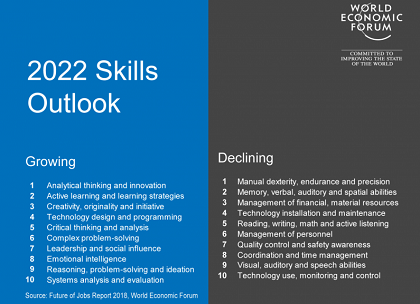
Upon that reskilling and upskilling, the WEF says that there will be a ‘net positive outlook for jobs’.
Understandably, though, many people are baffled: which skills should be nurtured and honed and which ones discarded? The following table created by the WEF goes some way to clarifying this, although I believe in many respects it’s a ‘wait and see’ situation.
How did we get here?
The future of work has been growing legs thanks to several drivers of change. The name we have given collectively to these drivers of change is: The Fourth Industrial Revolution. It was in the previous three industrial revolutions where work and domain expertise became more pronounced in society.
The Fourth Industrial Revolution is doing away with work as we know it and domain expertise as we know it. The drivers of change specifically referenced to in the WEF report are:
- High-speed mobile internet
- Artificial intelligence
- Big data analytics
- Cloud technology
These inventions are causing immense change and disruption in most, if not all industries. But disruption is not entirely bad experts are asserting. Disruption in the education space, for instance, is something that could democratize education with more people able to access it.
What can you do?
The WEF reckons that we need to be aware of the rapid development of technology, but particularly with regards to its impact on our jobs. The report suggests that upskilling to meet these shifting job requirements, throughout a career, is best practice for workers in the modern age.
The WEF says that workplaces are going to undergo accelerated technology adoption, but that there will be positive spin-offs: it will relieve workers from some dangerously physical work and will allow us to dodge the more repetitive and dull tasks. Furthermore, the report stated:
“Our findings indicate that by 2022, augmentation of existing jobs through technology may free up workers from the majority of data processing and information search tasks--and may also increasingly support them in high-value tasks such as reasoning and decision-making as augmentation becomes increasingly common over the coming years as a way to supplement and complement human labor.”
Works Cited
“The Future of Jobs Report 2018.” World Economic Forum, www.weforum.org/reports/the-future-of-jobs-report-2018.
- Details
- Written by: Quintus Potgieter
Engineers often borrow from the natural world and biological processes for their work. But there was one natural process engineers could not fathom, or rather failed to take the time to figure out. Why, or how it is that a wombat’s faecal matter is cube-shaped.
The process of copying some of nature’s principles and using them as inspiration for engineering design is called ‘biomimicry’. But how the study of wombat stools could contribute to the engineering industry has not, up until now, been asked.

Patricia Yang, a mechanical engineer, specializes in hydrodynamics in animal bodies at the Georgia Institute of Technology. She spoke to the Institution of Mechanical Engineers:
“The first thing that drove me to this is that I have never seen anything this weird in biology. That was a mystery. I didn’t even believe it was true at the beginning. I Googled it and saw a lot about the cube-shaped wombat poop, but I was skeptical.”
Yang and her team embarked on a process of studying wombat’s digestive tracts. What they found was that wombats’ intestinal walls caused the formation of cube-like faeces. They are, as far as humans know, the only animal to produce cube-structured faeces.
The thinking is that engineers could design something that mimics the digestive tract and intestinal makeup of the marsupial wombat to help mould cubic structures.
“We currently have only two methods to manufacture cubes: we mould it, or we cut it. Now we have this third method. It would be a cool method to apply to the manufacturing process - how to make a cube with soft tissue instead of just moulding it.”
Whilst Yang and her team are based in the United States, this discovery is quintessentially Australian. The wombat is found in the forest-covered area of southeastern Australia. Yang explained that the intestines are responsible. Apparently the wombat faeces are in a liquid state early on in the intestine, but become firm and cube-shaped in the final 8% of the intestinal tract. She said:
“Wombat intestines have periodic stiffness, meaning stiff-soft-stiff-soft, along the circumference to form cubical faeces.”
Biological Transformation
Europe’s largest application-oriented research organization, Fraunhofer-Gesellschaft is encouraging biomimicry with a new campaign entitled: Futuras In Res. They say that innovators should keep using nature as inspiration when they design new products. They make specific mention of salt shakers - modeled after poppies, robot gripper arms - reminiscent of elephant trunks or cameras - like insect eyes. President of the Fraunhofer-Gesellschaft, Professor Reimund Neugebauer says:

“We regard Biological Transformation as the systematic application and combination of processes, principles and materials found in nature to engineering. It will lead to entirely new and more sustainable processes in value creation and manufacturing. By focusing on nature as a driver of innovations, we can use in a new era.”
Biological Transformation and biomimicry is becoming a hallmark of the Industrie 4.0/fourth industrial revolution. The group brought many industries together in June of this year to collaborate and brainstorm on future technologies that could benefit the world.
The main topics discussed were Industrie 4.0, bio-manufacturing, artificial intelligence, biotechnology, bionics, the circular economy and sustainability.
Engineers should look out for opportunities in these cutting edge industries which are innovating and changing the world. But they should also remain alert - sometimes the breakthrough can be something quite surprising and no more sophisticated than the humble wombat poop!
Works Cited
Mechanical Engineering History Timeline - IMechE, www.imeche.org/news/news-article/engineer-solves-mystery-of-cubic-wombat-faeces-to-inform-manufacturing-processes.
“Biological Transformation: Nature as a Driver of Innovations in Engineering and Manufacturing.” Fraunhofer-Gesellschaft, www.fraunhofer.de/en/press/research-news/2018/june/Biological-Transformation-nature-as-a-driver-of-innovations-in-engineering-and-manufacturing.html.
- Details
- Written by: Quintus Potgieter
Another Black Friday and a Cyber Monday have come and gone, as has Christmas and Boxing Day.
According to VOX, it is estimated that the US Postal Service makes 850 million deliveries from Thanksgiving to New Year’s Day. That equates to a lot of parcel deliveries via a host of transportation technologies.
Executive Director at The Energy Policy Institute at the University of Chicago pointed out back in 2016 that US C02 emissions from transport eclipsed power stations for the first time since 1979.
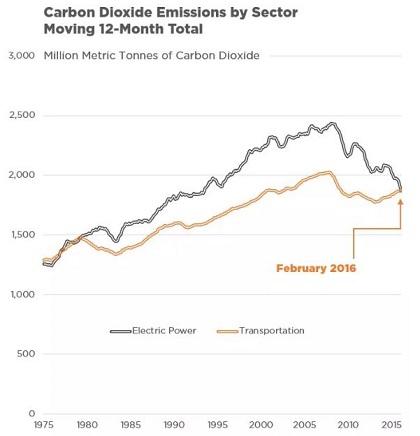
Air quality is becoming a bone of contention for many people around the world, but do they know exactly which entities are the worst offenders for polluting the air?
Not until now – and it is thanks to engineering.
Sensor and satellite technologies are producing data which will help inform citizens and make private sector and government far more transparent.
An organization named Resources for the Future, use satellite data to measure air pollution. Their conclusions, as compared with previous studies, indicate that 24% more Americans live in areas that do not meet the federal air quality standards, as set out by the Environment Protection Agency.
The 24% spike is concerning, but the use of multiple sensors may account for the increase.
New technologies = more data
Engineered sensor technologies are becoming increasingly important to climate scientists and energy policy makers alike. Historically, air quality monitors have been overly expensive. This has led to single investments of air quality monitors in US states, and the statistics, therefore, are relevant only to focused pockets rather than to the length and breadth of each state. Some states literally have one stationary sensor measuring air quality.
The Environmental Defense Fund demonstrates the illogical nature of single monitors versus the clearly superior mobile sensors:

Google Earth Outreach has come to the rescue, piloting a project that will see low-cost sensors map air pollution at a ‘hyperlocal’ level. The EDF says these sensors can ‘be mounted on cars, trucks, and even bicycles - or in denser stationary networks than regulatory monitors’.
With the wider network of sensors capturing air quality data, a clearer picture of the degradation of air quality can be made. Furthermore, the mobile sensors will enable everyone to access the information via online maps with updated air quality readings.
Making the data freely available could have interesting consequences.In the near future, for example, before people make a property investment, the air quality of the area may be considered first and foremost.
Forbes is encouraging companies to equip themselves with the kind of processes which might spare them the public scorn of their carbon footprint. Especially the kinds of companies involved in the shipping and logistics industries. They suggest companies do the following to prevent future outrage when mobile sensors give the public a clearer picture of the air quality around their buildings:
- Do an energy audit, invest in energy efficiency, and electrify building heat sources.
- Invest in renewables or purchase energy from clean energy providers.
- Work with your supply chain to set science-based targets, adopt best practices, and measure and report progress.
- Partner with other companies, utilities, communities and governments to innovate, create infrastructure, and show demand for heavy-duty vehicle electrification
Works Cited
Fund, Environmental Defense. “New Technology, Transparency Will Soon Tie Air Pollution Back To Brands.” Forbes, Forbes Magazine, 20 Nov. 2018, www.forbes.com/sites/edfenergyexchange/2018/11/20/new-technology-transparency-will-soon-tie-air-pollution-back-to-brands/#276af29a10b6.
Ori, Sam. “Sam Ori (@samori8).” Twitter, Twitter, 26 Nov. 2018, twitter.com/samori8.
“A New Challenge for Sensors: 24 Million More Americans Breathing Unhealthy Air than Previously Thought.” Environmental Defense Fund, www.edf.org/blog/2018/09/20/new-challenge-sensors-24-million-more-americans-breathing-unhealthy-air-previously.
- Details
- Written by: Quintus Potgieter
The technological advancement in education has lagged behind other industries. Yet there are technologies available that would transform the classroom, the lecture hall, or even a person’s home, and ultimately transform learning.
The Future of Management Education Alliance wants to bring these technologies to the learners of the 21st century. The alliance is headed up by the Imperial College Business School who plan to introduce hologram technology to their MBA students.
The Imperial College Business School has an educational technology lab (Edtech Lab) that assists the school find the kinds of technologies that would better train the students at the institution.
David Lefevre, director of Imperial’s Edtech Lab said: “This gives our teaching staff a sense of presence when talking with students. Otherwise we might as well run a lecture on Zoom.”
Zoom is video conferencing software employed by some institutions to reach their students via the internet and conduct lectures virtually.
Emmanuel Métais, Edtech Labs’ dean told Financial Times:
“This initiative reflects our commitment to be at the forefront of innovation, not only to provide students with a better learning experience but to make them succeed in a fast-changing world. At Edhec, we believe that excellence and innovation are the two pillars on which our people build their own personalities and careers to make an impact on the world.”
Built by engineers, for engineers?
The hologram technology was developed by Canadian company AHRT Media.
Holographic technology can be leveraged to teach students while a lecturer is on the other side of the world. And the technology has come down in price.
It is not inconceivable to think that students may be taught by lecturers who would appear as holograms. And engineering scholars might need it most. Through simulation technology (virtual and augmented reality) engineers can be taught in virtual spaces.
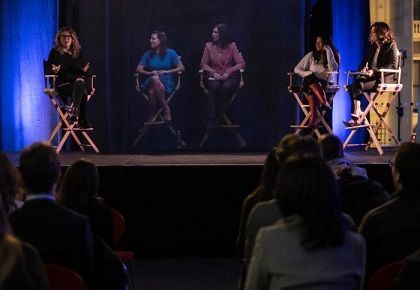
Even though the technology has not been directly targeted at engineering education, it will be in the next few years. Lefevre concludes:
“Introducing hologram technology to the classroom will break down the limitations of traditional teaching by creating an interactive experience that benefits both students and academics. Rather than replacing or reducing real-life lectures, the hologram technology will provide greater flexibility for academics by enabling them to continue teaching whilst travelling, ensuring consistency and quality for students.”
Works Cited
Moules, Jonathan. “MBA Students to Be Offered Hologram Lectures.” Financial Times, Financial Times, 1 Nov. 2018, www.ft.com/content/01749584-dcf9-11e8-8f50-cbae5495d92b.
Singleton, Laura. “Imperial College Business School to Offer Live Lectures via Hologram | Imperial News | Imperial College London.” Imperial News, 2 Nov. 2018, www.imperial.ac.uk/news/188851/imperial-college-business-school-offer-live/.
- Details
- Written by: Quintus Potgieter
2018 marked 100 years since the end of World War I. On the eleventh day, of the eleventh month, of the eleventh hour in 1918, the Allies of World War I and Germany signed a treaty that ended the war.
World War I was a turning point in warfare. In its time, it was the most significant war with the most modern warfare equipment ever invented — Mortars, machine guns, rifles, poison gas and the surprising entrant of the flamethrower. But it wasn't just the handheld equipment and biological weapons that were new.
Even light railways were set up between the trenches upon which petrol-powered locomotives could ride and transport both soldiers and weaponry. But the British still needed something that would give them the upper hand on the Germans.

A stalemate on the Western Front, where endless trench warfare was taking place, had produced the need for a new land-based, cross-country vehicle that could breach enemy lines.
The British army then received a shipment of heavy artillery that they had never seen before.
Director of the Lord of the Rings trilogy Peter Jackson has captured some of the mysticism surrounding the arrival of the tanks in his latest documentary on World War I named ‘They Shall Not Grow Old.' Real soldiers whose stories were captured by the Imperial War Museums and sampled in the documentary relayed their stories:
"They were on the roadside covered with tarpaulin sheets. You could see nothing except a square outline."
"And then the officer said, ‘these are supposed to be hush-hush,'" another soldier recalled.
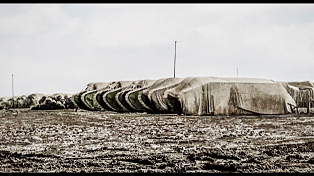
Another said, “When we asked what it was, the simple reply was: tanks. Knowing the shortage of water we had actually assumed water tanks and thought we were getting reserve supplies. It was one of the best kept secrets.”
The engineering of the tank ushered in a new era of mechanized warfare that has continued until today.
Fiction becomes fact
In 1903, H.G. Wells wrote a short story named ‘The Land Ironclads.' In the fictional story he writes about 100-foot-long armored fighting vehicles that would carry key army personnel across enemy lines. Thirteen years later, Wells’ prediction that ironclad machines impervious to machine gun fire would traverse the battlefield came true.
It was actually a young Winston Churchill - who at the time was the First Lord of the Admiralty - that had a hand in the commencement of the engineering of tanks. He set up a top-secret collective in February 1915 named the Landship Committee.
After a spot of trial and error — and a few prototypes went wrong — Sir William Ashbee Tritton (a British expert in agricultural machinery) and Major Walter Gordon Wilson (a mechanical engineer) were the designers behind the world’s first tank. It was named Little Willie, intentionally mocking German Imperial Prince Wilhelm.

The caterpillar tracks fitted on to the first iteration of the tank was good for traversing over land but got stuck when it tried to ride over any of the parapets (a protective wall or earth defense) in front of the German trenches.
The second iteration of Tritton and Wilson's invention was a more rhomboidal shape that had tracks going all the way around the hull. A mock battlefield with a trench even wider than those in the actual war was set up, and the tank was tested. It surpassed expectations. This was the prototype they sent off to the war.
David Lloyd George, who in 1916 became the secretary of state for war wrote: “At last, we have the answer to the German machine guns and wire.”
Another two prototypes were eventually released toward the end of 1917 and mid-1918 respectively. Nonetheless, the tank had woken up the militaries of the world, and in the wars to come, everyone would want one. The rest, as they say, is history.
It is estimated that nearly one million British and Empire servicemen were killed between 1914 and 1918. The total number of military and civilian deaths in the entire war was determined to be between 15 to 19 million people.
Works Cited
“How Britain Invented The Tank In The First World War.” Imperial War Museums, www.iwm.org.uk/history/how-britain-invented-the-tank-in-the-first-world-war.
“They Shall Not Grow Old.” IMDb, IMDb.com, 9 Nov. 2018, www.imdb.com/title/tt7905466/?ref_=nv_sr_1.
- Details
- Written by: Quintus Potgieter
Friday 30 November is Systems Engineer Day!
A systems engineer's job is to create and manage complex systems. They ensure that the system has a good life cycle and that all systems are running efficiently.
This celebration debuted in 2012, lauding the engineers who, through design and implementation of digital solutions, make a difference in the many workplaces globally. On the day, everyone is encouraged to high five their systems engineer and show their appreciation.
Systems engineers are becoming increasingly valuable to companies as the Fourth Industrial Revolution brings about complex networks to facilitate the Internet of Things. These system engineers are vital and essentially — at least in the interconnected technological industry— make the world go round.

Systems engineers have to work tirelessly to understand user experience. They need to tailor their systems to what they think other people will enjoy and consider efficient.
Dice Insights, an institution which provides advice for tech professionals, reports that systems engineers with an extensive understanding of Linux systems specifically, could be looking at a bigger salary per month.
How to become a systems engineer
According to Dice Insights, the best path to becoming a systems engineer starts with a degree in computer science, information systems, or engineering. They write:
“As systems engineers gain experience, they’ll learn the tools and techniques necessary to manage systems at scale--for example, a senior systems engineer (i.e., systems engineer III) will not only need experience in designing and implementing the overall architecture of a software system, but must have tactical knowledge of virtualization, containers, systems design tools and languages, and analytics.”
Systems engineers need to be fully aware of what networking technologies are available. They should also anticipate the release of new ones that they can implement.
System engineers can go by many names, according to SystemsEngineerDay.com. They can be called systems engineers, infrastructure engineers, system integrators, architects, system analysts, and more.
It’s therefore clear that systems engineer can be present across most of the disciplines of engineering. With engineering becoming more and more interdisciplinary, education institutions are creating new qualifications to formalize the domain expertise moniker of ‘systems engineer.' Boston University has a minor qualification, MEng, MS, and Ph.D. in Systems Engineering.
They say that their graduates can work in a plethora of industries that include but are not limited to:
- Developing computer simulation packages for software providers
- Building and evaluating models for communication, computer and sensor networks
- Developing effective air traffic management systems
- Analyzing the feasibility of relying on teams of autonomous vehicles for military and civilian applications
- Developing, enhancing and maintaining quantitative stock selection models that are used to pick high-performing stocks for clients
- Developing and supporting software that optimizes a company’s global supply chain operations and provides multiple-year production plans based on various supply, demand and capacity scenarios.
- Inventing new scheduling and production control algorithms for manufacturing enterprises.
- Developing a pairing optimizer and crew controller, to provide crew pairing and rostering for more than 30 airline companies all over the world.
- Designing innovative algorithms and software to direct user traffic across the internet, optimizing the end-user experience.
The Engineering Institute of Technology’s Dean of Engineering, Steve Mackay, says that adding systems engineering into the career mix is a wise decision. Systems engineering, in his opinion, represents the function of teaching the old engineering ‘dog’ new tricks. He writes:
“Systems engineering would appear to be mainly in the aerospace and military sphere but it is across all fields of engineering ranging from car manufacturing, building plants & infrastructure, oil and gas, mining and transport and in many newer areas. A great example of a growing field of systems engineering is the smart grid - dynamic, complex with many different disciplines involved in its creation coupled with a high degree of uncertainty and a great opportunity to optimize. Or smart self-driving cars - the number of different disciplines here are mind boggling.”
Consequently, if you know someone working towards becoming a systems engineer, who can grapple with all of the technological development that the convergence of engineering disciplines has produced, celebrate them this Systems Engineer Day.
Works Cited
KolakowskiNovember, Nick. “Systems Engineer Salary Rises Even Higher with Linux Experience.” Dice Insights, Dice, 16 Nov. 2018, insights.dice.com/2018/11/13/systems-engineer-salary-rises-even-higher-with-linux-experience/.
“What Is Systems Engineering?” Family and Medical Leave Act (FMLA) | Human Resources, www.bu.edu/eng/departments/se/prospective-students/what-is-systems-engineering/.
“What Is Systems Engineering?” Family and Medical Leave Act (FMLA) | Human Resources, www.bu.edu/eng/departments/se/prospective-students/what-is-systems-engineering/.
“Systemsengineerday.com.” Systemsengineerday.com, www.systemsengineerday.com/.
- Details
- Written by: Quintus Potgieter
Future generations will judge us for not taking the necessary precautions to offset the effects of climate change on our world. The blame will inevitably involve our reticence to cut down on fossil fuels. In reality, however, the task is massive and will rely on science, technology, engineering and government all committing to solving the problem.
Mark Lynas, a British journalist and environmentalist, has been issuing warnings since 2007. He explains what will happen to the world if the earth continues to warm, Six Degrees: Our Future on a Hotter Planet.
In one chapter he writes about the Palmer Drought Severity Index — a computerized forecast run by the Hadley Centre at Britain's Meteorological Office. This computer model calculates the likelihood of drought in the century to come. In 2007 he wrote the following:
"The results were deeply troubling. The incidence of moderate drought doubled by 2100 — but worst of all, the figure for extreme drought (currently 3 percent of the planet's land surface) rose to 30 percent. In essence, a third of the land surface of the globe would be largely devoid of fresh water and therefore no longer habitable to humans."

This prediction is based on global warming of higher than one degree. And according to a recent study published in the Nature Journal, the Panel on Climate Change (IPCC) believes that by 2100 the temperature will rise by 2 to 4.9 degrees Celsius.
Adrian Raftery, the author of the study, said:
"The likely range of global temperature increase is 2.0-4.9 (degrees Celsius) and our median forecast is 3.2 Celsius. Our model is based on data which already show the effect of existing emission mitigation policies. Achieving the goal of less than 1.5 C warming will require carbon intensity to decline much faster than in the recent past."
Importance of education and teamwork
Experts believe that if engineering disciplines come together to figure out a path forward, the looming water and energy crises can be solved. However, with universities still catering to individual subjects, a shake-up in education needs to occur.
This, according to a study entitled, Adapting to Engineering Education Vision 2020, published by the Multidisciplinary Digital Publishing Institute.
The authors say that in many countries universities have pursued curricula that teach students ‘soft skills' instead of the ‘professional skills' required for engineers. And yet the world needs competent engineers if they are to solve existing and growing crises.
Technological advancement is making it easier for humans to solve the world's most pressing issues. With the right education people will be well placed to manipulate these new technologies to create positive outcomes.
The authors of the report write:
“It is not possible without putting the emerging bio, nano, and info technologies together in power and energy research laboratories under interdisciplinary and trans-disciplinary approaches. Electrical engineers badly need the supportive hand of energy scientists and technologies to overcome global power, energy, food, and water crises. Engineers and scientists often find it difficult to tolerate each other and usually end up with duplicate resources without presentable output which requires motivation to develop teamwork spirit to succeed.”
The authors believe students who have an affinity for energy in chemistry subjects will eventually work in new fuel cells or solar cells. This would provide a great opportunity for engineers and scientists to work together. They say that scientists and engineers are stuck in ‘discipline defense politics' and are squandering this chance to collaborate.
Interdisciplinary curricula within degree programs are helping to equip students to tackle current world problems. The authors of the study point out that an updated engineering curriculum might see the following modules present in the coursework: renewable energy, molecular electronics, polymer solar cells, solar paints, and photochemistry.
The authors conclude:
“Future energy supply to society is a big challenge that individual disciplines cannot harness alone without developing a spirit of interdisciplinary research and development. Keeping in view world energy sources and global power needs, we must readjust our energy wasting attitudes and prepare our generation to cope with future power and energy crisis.”
Works Cited
Raftery, Adrian E., et al. “Less than 2 °C Warming by 2100 Unlikely.” Nature News, Nature Publishing Group, 31 July 2017, www.nature.com/articles/nclimate3352.
“Six Degrees by Mark Lynas.” Goodreads, Goodreads, www.goodreads.com/book/show/227477.Six_Degrees.
Yasmin, Musarat, et al. “Adapting to Engineering Education Vision 2020.” Proceedings, vol. 2, no. 21, 2018, p. 1365., doi:10.3390/proceedings2211365.
- Details
- Written by: Quintus Potgieter
By all accounts engineering remains a male-dominated industry.
In 2015, the U.S. Department of Commerce reported that women fill 47 percent of all jobs, while men take up the other 53 percent.
However, according to more recent figures from the National Science Board, women only filled 24 percent of STEM jobs in 2018. And the industry in which women are least represented? Engineering.
TechCrunch writer Dr. Ioannis Miaoulis, president and director of the Museum of Science in Boston, says the numbers are ‘startling.' He writes:
“At a young age, girls internalize long-lasting stereotypes that tell them that boys are better at engineering and computer science, and that girls simply aren’t engineers. And during these formative years, they never have an opportunity to imagine themselves as engineers.”
Dr. Jordan B Peterson, a professor of psychology at the University of Toronto, explains why that might be:
“Women are tilted towards empathizing and males are tilted towards systematizing. That seems to fall into alignment with other observations suggesting that, the biggest gender difference between adult humans is interest preference. Women are much more likely to express interest in occupations that involve a lot of social contact, whereas men are more likely to manifest interest in occupations that have to do with things.”
Peterson points out that even in the Scandinavian countries — considered the most gender equal societies in the world — the most striking gender differences exist, based on occupation. He reports that the ratio of male nurses to female nurses is 1:20, and the ratio of female engineers to male engineers is also 1:20.
Breaking boundaries
Dr. Ioannis Miaoulis notes that even with the advocacy groups and the many institutions prepared for increasing numbers of female engineers, the results are disappointing.
The Engineering Institute of Technology has seen more women apply to the institution as the boundaries of entry for women lowers in the education sector. A 24-year old female Advanced Diploma of Civil and Structural Engineering graduate from EIT, Oyama Khanyisile Vundla, is a driven young woman ready to take on the Engineering world. She says:
“Media plays a huge role in people’s perceptions of how men are equipped for engineering and women are not. Even the movies we watch display men as engineers, people end up believing that women can’t survive in these industries. I would definitely advise young women to pursue this industry and cast away all the negative spin that says we can’t survive in this industry.”
What else can the world collectively do to inspire more females to join the Engineering workforce?
Apparently the answer is to play video games!

A study published in the journal Computers in Human Behavior reports that girls who play a plethora of video games between the ages 13 and 14 are more prone to investigating STEM job opportunities in their future.
Through the demographics of the women polled in the study, it was clear that a majority of the women who identified themselves as gamers were studying STEM subjects at degree level.
The study conducted by Director of Ph.D. in Higher Education at the University of Surrey,
Anesa Hoesin said:
“Our research shows that those who study STEM subjects at degree level are more likely to be gamers, so we need to encourage the girl gamers of today to become the engineering and physics students and pioneers of tomorrow.”
Hosein is trying to pressure educators to introduce gaming to girls at a young age so that they become familiar with interacting with technology at a high level.
We could also use platforms such as YouTube to get girls interested in a digital future where an equal number of men and women are engineers. A YouTuber named GoldieBlox features a young female engineer showing off her skills to a wide audience of 561,345 subscribers.
Goldieblox is a digital media, publishing and consumer products company that is helping inspire girls in STEM fields. They target their content towards young girls, in the hope of encouraging them to pursue STEM opportunities in the future.
Currently, only 11 percent of engineering faculty in the US is women. The key to improving this statistic seems to revolve around getting girls involved in engineering at a younger age. New strategies must be tested so humanity can benefit from the contribution women could bring to the engineering industry.
Works Cited
“'Geek Girl' Gamers Are More Likely to Study Science and Technology Degrees.” University of Surrey, www.surrey.ac.uk/news/geek-girl-gamers-are-more-likely-study-science-and-technology-degrees.
Miaoulis, Ioannis. “We're Addressing Gender Disparity in Engineering Way Too Late.” TechCrunch, TechCrunch, 26 Oct. 2018, techcrunch.com/2018/10/26/were-addressing-gender-disparity-in-engineering-way-too-late/.
Ramble. “Jordan B Peterson: Why so Many Male Engineers and Female Nurses?” YouTube, YouTube, 7 Aug. 2017, www.youtube.com/watch?v=d7uZOAzVRgU.
- Details
- Written by: Quintus Potgieter
At the foot of the pyramids of Giza, a new museum is taking shape.
Five thousand Egyptian civil engineers are hard at work to complete the Grand Egyptian Museum. Construction began 16 years ago, and the doors are expected finally to open in early 2019.
One of the firms attached to the build is Buro Happold Engineering. They say the museum will be a construction where ‘mathematical precision meets elegant vision.'
The initial call for proposals for the museum was in 2002. The winning designers were Heneghan Peng from Dublin, Ireland. They worked alongside Arup, an independent firm of designers, planners, and engineers. The exhibition design was completed by Metaphor and Cultural Innovations Ltd.
It is expected to assume a 50 hectare stretch of land and will go down as one of the most audacious museum builds in world history. Director General of the museum, Tarek Tawfik told CNN:
“This will be the museum of the 21st century. All means of modern technology have been taken into consideration in order to make this an unforgettable experience for the visitor, but at the same time provide the best possible environment for the artifacts.”
The museum's construction is expected to cost US $1 billion. Inside it are the country's most marvelous relics and artifacts of the past. The Colossus of Ramses II, weighing in at 121 tonnes, (already transported across Egypt) is to be moved to the Grand Egyptian Museum. He will be standing tall above the visitors at the museum’s entrance.
A Horus God statue has also been transferred from Al-Masalah Garden in Zamalek to the Grand Egyptian Museum.

The building has been constructed to resemble a chamfered triangle — a homage to the pyramids. Built on a sand hill, engineers had their work cut out for them. Tawfik said:
“This made it a bit more difficult to prepare the location, but it had the big plus point that there was no fear to stumble over antiquities here because the ancient Egyptians didn’t build any temples or carve any tombs into sand.”
Another feat of civil engineering will be an 800 meter long, 40 meter tall translucent stone wall, erected just in front of the museum. When tourists approach from the Cairo side, the translucent stone will produce a natural, inviting entrance to the museum. An 800-seat auditorium is also to be opened inside the museum.
The museum is downwind from the Giza pyramids and perfectly adjacent to the Giza pyramids, just two kilometers away. Another phase of the construction includes building a Conservation and Energy Center (CEC) that will house a conservation center, conservation plant, and a fire station.
Conservation
While being an impressive feat of civil engineering, the museum will also be an enigma of conservation.
The museum will also include King Tut-Ankh-Amun's Treasure — the only complete set of royal belongings in Egyptian antiquities collections.
Two-thousand-and-six of King Tut's 5,300 possessions will be shown off in the Grand Egyptian Museum. Conservationists are in the process of polishing the artifacts with specialized techniques, ensuring not to cause any damage.
One of King Tut's sandals was said to be beyond restoring, yet it has been done and is now present in the collection. Consequently, the museum's construction has also spurred one of the most significant restoration projects in the world.
Other attractions include artifacts from Queen Hetepheres I’s tomb; these antiquities were discovered in 1925.
The museum's visitors will have the chance to look at artifacts that date back at least 3,500 years. The Egyptian government is hoping that the opening of the museum will reinvigorate its tourism industry after the instability caused during the 2011 Arab Spring.
Works Cited
The Grand Egyptian Museum, www.gem.gov.eg/index/Museum -Museum Building - Facade & Entrance.htm.
“Egypt's New $1 Billion Museum.” CNN, Cable News Network, 5 June 2018, edition.cnn.com/style/article/grand-egyptian-museum/index.html.
“Grand Egyptian Museum.” BuroHappold Engineering, www.burohappold.com/projects/grand-egyptian-museum/.
- Details
- Written by: Quintus Potgieter
Mechanical engineers are flexing their eco-friendly and business savvy muscles in the startup industry. Pratheek Palanethra was a mechanical engineering student in Bengaluru and is also passionate about cricket.
During his student years - studying for his Master of Technical Entrepreneurship at Lehigh University in Pennsylvania – he was sad to discover that there was really no cricket culture in the US. He struggled to find students who wanted to practice cricket with him. Instead of allowing it to perturb him it inspired him; he decided to engineer something to enable his practice.
He enlisted the help of his roommate Justin Jacobs, who was studying civil engineering at the time, and they began work on an affordable, non-electric bowling machine.
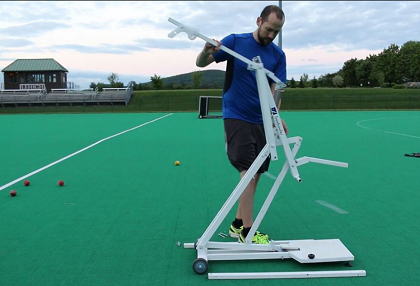
“We really wanted to be innovative the cricket market. Everyone’s going high-tech, we are going low-tech,” Justin said.
Usually, cricket bowling machines are quite expensive. In South Africa — where cricket bowling machines would be in high demand — a Paceman Pro Bowling Machine costs approximately US $932.
A new product ready to fly
Pratheek and Justin’s new mechanical engineering startup soon announced their eco-friendly, affordable answer to the bowling machine; they called it the Freebowler. The bowling machine is free from batteries, cords, and has no electricity ports on it.
What they produced was a purely mechanical product, fitted with a throwing arm operated via a spring, a ball cup, and more.
"The ball in the cup can be set at different angles and orientation using a knob that enables the batsman to play variations of lengths and swings," said Pratheek.
"The machine has wheels at the bottom to maneuver and is thus portable. It can be placed shorter than the normal 22-yard distance from the batsman. This way it enables the batsman to play different length and bounce at higher speeds."
The Freebowler costs approximately US $434. The Freebowler also matches, and in some cases, trumps other bowling machines' output speed: the Freebowler can launch balls at up to 140 kilometers per hour (87MPH). The Freebowler weighs in at only 23 kilograms. It's a perfect product for remote regions which do not have access to electricity or cannot afford conventional bowling machines.
The machine can take old cricket balls, new balls, indoor cricket balls, baseballs, and tennis balls.
Mechanical engineering for the betterment of sports could indeed be an area of growth with the Freebowler as the inspiration. The Freebowler website states:
“Machines that have this capacity to contort in a unique way, combined with an amount of storing convenience, environmental consciousness and adjustability not only show how far technology has come, but it also enhances the sport’s overall value.”
Works Cited
“Cricket Bowling Machine | Non-Electric Training Equipment.” Freebowler, freebowler.com/.
“This Startup Is Batting for Cricket Lovers with Its Portable Non-Electric Bowling Machine.” YourStory.com, 28 Oct. 2018, yourstory.com/2018/10/startup-batting-cricket-lovers-portable-non-electric-bowling-machine/.
- Details
- Written by: Elyse Simich
As 2018 comes to a close, the industrial automation market is preparing to further digitize and automate industries into 2019.
McKinsey Global Institute (MGI) reports that by 2030 about 15 percent of workers around the world will be displaced by automation. However, they also note that employees are unaware that eight to nine percent of them will work in jobs that don't yet exist.
Consequently, automation will not only replace repetitive jobs, but also create new opportunities in many industries. This is why a culture of life-long learning is critical; a willingness to upskill and cross-skill.

Dean of Engineering at the Engineering Institute of Technology, Steve Mackay, believes emphatically that automation will preserve the engineer, not replace him/her. However, Steve notes that they should take responsibility for their futures, by being aware of the changes occurring in the industry.
"You may be doing something today, but tomorrow you will be doing something completely different," he said, in a lecture.
"The most important message is that you should commit to continuous professional development. Look for the job demands of the country you are based in and be open to opportunities to learn and skill up. Every country needs certain kinds of engineer - in fact - every town has its own particular demands.”
Global innovation requires engineers
What should educational institutions be including in their curricula, to ensure students are equipped to tackle Industry 4.0? How much on-the-job training needs to occur in industries that have introduced more automated processes into their businesses?
Those are essential questions that organizations are collectively asking. However, getting the average person interested and skilled in using new technologies is a tall order.
The World Economic Forum has invested in the construction of 12 Fourth Industrial Revolution centers around the world that will familiarize the public with the kinds of technologies one would and will see in the Industry 4.0 world.
Professor Klaus Schwab, founder and executive chairman of the World Economic Forum said:
"The centers are looking at eight different technologies, such as artificial intelligence, blockchain, drone technology, big data, precision medicine and so on, to develop the necessary ethical views, policies and regulations around these technologies which can be applied on a global level."
Schwab, in a recent video by WEF, commented on how unprepared the world is for the current digital revolution. He points out that it is those with technical backgrounds who are vital to the growth of the fourth industrial revolution, and perhaps a better world for all.
And workers with technical skills are more likely to circumnavigate the hollowing out of jobs that Industry 4.0 technologies threaten. CareerBuilder’s CEO Irina Novoselsky explains:
“Most of the fastest-growing occupations have a technical component to them. Workers across all job levels will need to continually pursue opportunities to upskill in order to maneuver around accelerated shifts in labor demand. This is a particularly pressing issue for middle-wage workers who are at greater risk of becoming displaced and workers in general who want to move up into better-paying jobs.”
The World Economic Forum's 2018 Future of Jobs Report aptly said that 54 percent of all employees will need ‘significant re- and up skilling' by the year 2022, to meet the changes coming to workplaces.
Works Cited
Ellingrud, Kweilin. “The Upside Of Automation: New Jobs, Increased Productivity And Changing Roles For Workers.” Forbes, Forbes Magazine, 23 Oct. 2018, www.forbes.com/sites/kweilinellingrud/2018/10/23/the-upside-of-automation-new-jobs-increased-productivity-and-changing-roles-for-workers/#276a7b1e7df0.
Letsebe, Kgaogelo. “WEF to Establish Industry 4.0 Centre in SA.” ITWeb, ITWeb, 28 June 2018, www.itweb.co.za/content/VgZeyvJAONaqdjX9.
Morgan, Hannah. “To Fend Off Your Robot Replacement, Reinvest in Job Training.” U.S. News & World Report, U.S. News & World Report, money.usnews.com/money/blogs/outside-voices-careers/articles/2018-10-19/warning-you-need-to-reinvest-in-job-training.
- Details
- Written by: Quintus Potgieter
Is the move to electric vehicles on track?
Last year the UK government pledged that the manufacture of petrol and diesel cars would cease by 2040. In July, they then amended their pledge to also exclude hybrids (cars powered by electricity and petrol/diesel). MPs in the United Kingdom are, however, growing ever more skeptical about the viability of a majority electric vehicle future by 2040.
On the other hand, a new report has been released by the Business, Energy and Industrial Committee, ‘Electric vehicles: driving the transition.' They believe that the initial pledges by the government were ‘vague' and lacked ambition. They recommend that government ban the sales of fossil-fueled vehicles by the year 2032 and make the necessary investment to facilitate it.
Chair (and engineer) of the Business, Energy and Industrial Committee said:
“We cannot expect consumers to overcome ‘range anxiety’ and switch to electric vehicles if they cannot be confident of finding convenient, reliable points to regularly charge their cars. The government needs to get a grip and lead on coordinating the financial support and technical know-how necessary for local authorities to promote this infrastructure and help ensure that electric cars are an attractive option for consumers.”
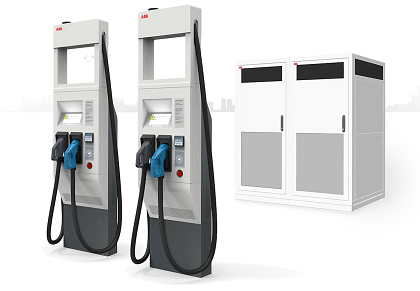
The technical know-how across many facets of the global rollover to electric vehicles will be an essential focus in the next few years. Training a league of engineers to focus specifically on electric cars is vitally important.
Electric Car engineering courses, and Hybrid and Electric Vehicle Engineering Academies are popping up fast to meet the potential skills shortage that the automobile industry might face as 2040 approaches. Despite these efforts experts worry that deadlines cannot be met for a 2040 deadline, let alone one in 2032.
Mike Hawes, the chief executive of the Society of Motor Manufacturers and Traders (SMMT), as quoted by Verdict UK, said:
“The government’s 2040 ambition was already extremely challenging, so to fast-track that by eight years would be nigh impossible. We said we need world-class infrastructure and world-class incentives to have any chance of delivering so the recent cuts to the Plug-in Car Grand and lack of charging facilities - both of which are severely criticized by the Committee - show just how difficult it would be to accelerate this transition.”
The overarching reason for lessening the number of combustion engines on the road is to minimize emissions. The current government ambition is named the ‘Road to Zero Strategy.'
The current situation
EV Volumes analyses the electric car market - it has reported that there were 3 million electric vehicles in operation worldwide, by the end of November 2017. Another 2 million are expected to be on the roads by the end of 2018.
ABB have, however, released a new electric vehicle charger called the Terra HP. It can run three times faster than the current EV chargers on the market and can also service two vehicles at the same time. The development of faster EV charging technologies will encourage consumers and potentially fast-track the uptake of EVs. ABB confirms that in just eight minutes 200km (120 miles) of driving range will be added to the latest EVs on their new charging stations.
Works Cited
“ABB Powers e-Mobility with Launch of First 350 KW High Power Car Charger.” ABB Group - Leading Digital Technologies for Industry, 24 Apr. 2018, new.abb.com/news/detail/4439/abb-powers-e-mobility-with-launch-of-first-350-kw-high-power-car-charger.
Migliorato, Lorenzo, and Christopher Marchant. “Government Committee Considers 'Road to Zero' Petrol Ban by 2032.” Motor Finance, 19 Oct. 2018, www.verdict.co.uk/motor-finance-online/news/government-committee-considers-bringing-petrol-ban-forward-2032/.
“UK Government EV Plans Vague and Unambitious Claim MPs.” The Engineer, 19 Oct. 2018, www.theengineer.co.uk/mps-criticise-uk-government-ev-plans/?cmpid=tenews_6443514&utm_medium=email&utm_source=newsletter&utm_campaign=tenews&adg=5A0EAC12-A7C5-4FD9-9AA8-84D6979695B5.
- Details
- Written by: Quintus Potgieter
At this year's Dutch Design Week, the world's first 3D printed stainless steel bridge was unveiled.
The bridge was produced by a Dutch robotics company named MX3D. It will serve as a crossing over one of Amsterdam's oldest and most famous canals, the Oudezijds Achterburgwal.
Its construction utilized optimization software and a robotic additive manufacturing technology to layer molten steel repetitively. The traditional construction engineering approach to building a bridge has potentially been altered forever.
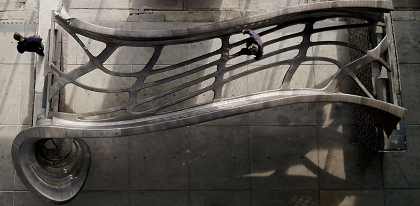
Six industrial robots equipped with ‘purpose-built tools' assisted in controlling welding machines that fused the bridge together. Reflecting on how the final design of the bridge changed, MX3D said:
“The initial design changed significantly due to the engineering concerns. The lightweight tree-like structure is built on four main bearers. The concern was that if one of these bearers gets hit by a boat, the structure could critically fail. Therefore a totally new concept was created that took into account everything we learned until then about the material, the local specifications and regulations.”
The bridge's structural integrity will be monitored via sensors, which will provide engineers with the data they need to ensure the bridge is structurally sound.
In a virtual space, the data will help build a ‘digital twin' bridge. A computer model will monitor the safety and performance of the bridge based on how many people have crossed it over time. This is something that structures around the world could benefit from. This technology allows engineers to simulate different situations to test out different stresses.
A new term is being coined in the midst of the technological development of bridges: smart bridges. MX3D is confident that construction robots will be widespread in the next five years.
"We have set a vision in which robots would be able to autonomously 3D print infrastructural interventions in our built environment," an MX3D spokesperson said. "The work on this 3D printed bridge will contribute to the future of safe, efficient and data-driven engineering by monitoring the structure as thousands of people and bicycles traverse the bridge hourly in place."
The feat of engineering won them the Dutch Design Award of 2018 in the Design Research category.
Works Cited
“MX3D Bridge.” MX3D, mx3d.com/projects/bridge-2/.
Yalcinkaya, Gunseli. “World's First 3D-Printed Steel Bridge Unveiled at Dutch Design Week.” Dezeen, Dezeen, 24 Oct. 2018, www.dezeen.com/2018/10/22/worlds-first-3d-printed-steel-bridge-completed-mx3d-technology/.
- Details
- Written by: Quintus Potgieter
Rolls-Royce and Intel have joined forces to develop an Intelligent Awareness System for future autonomous shipping projects.
The first entirely unmanned, crewless ships, with the self-sailing tech, are set to hit the oceans in 2025.
Inevitably, they will see crewed vessels working alongside them.
Don’t assume that this technology has rendered the lighthouse useless though. In the official simulated pictures published by Rolls-Royce, the lighthouse remains the beacon announcing land that it has always been.
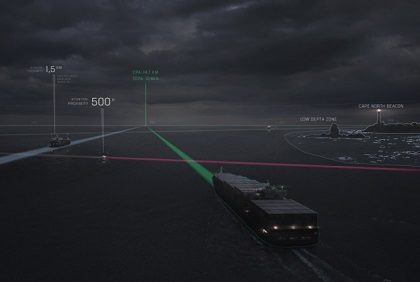
Nonetheless, the new system packs a punch in the technology department; the setup includes LIDAR, radar, thermal camera, High Definition cameras, satellite data and weather forecasts. With all of the data being generated by these technologies, Intel has fitted the system with their 3D NAND solid-state drives. The drives will store up to one terabyte of compressed data per day.
It’s possible that industrial-sized, autonomously controlled vessels could be greenlit by governments across the globe before autonomous vehicles! Only time will tell.
Kevin Daffey, director of ship intelligence at Rolls-Royce said:
“It presents an unparalleled situational awareness of what’s around the vessel to the watch-keepers on the bridge, including distances, the names of the vessels that are near them, or how far they are from land. Over the next three years we’ll begin to see the first commercially-operated ships with some degree of autonomous functionality on board, moving towards vessels that can make their own decisions from around 2025 onwards.”
A network of cameras with four interface modes will ensure security onboard these ships. The captain of the vessel will have 360 degrees of awareness, due to virtual reality, 2D and 3D, Augmented Reality and Precision mode.
When a ship is faced with a narrow route, the Precision mode utilizes the Rolls-Royce LIDAR system to measure distances between the ship and any obstacles. The Augmented Reality mode overlays graphics on a live camera feed provided with Intelligent Awareness sensors. The system recognizes markers and allows the captains to track virtually anything standing in its line of sight.
On the Virtual Reality and 2D and 3D maps, real-time awareness data is fed to the ship's systems. It gives the crew much more visibility and acts like a more sophisticated version of Google Maps. In the Costa Concordia shipwreck of 2012, the onboard radar technology was turned off by the captain who was sure he could use sight alone to navigate. With the new Rolls-Royce and Intel matchup, relying on the automated sailing software will be paramount for the onboard staff.
In time, however, the onboard staff will not be needed — the ships will drive themselves.
Works Cited
Vincent, James. “Rolls-Royce Is Partnering with Intel to Make Self-Driving Ships a Reality.” The Verge, The Verge, 15 Oct. 2018, www.theverge.com/2018/10/15/17979252/self-driving-autonomous-ships-drones-intel-rolls-royce-partnership.
- Details
- Written by: Quintus Potgieter
Innovation is sometimes all talk and no action. What actually gets engineers inventing and creating novel solutions to everyday problems? Handsome rewards, of course. The James Dyson Award is an international design competition that ‘celebrates, encourages and inspires the designers of new problem-solving ideas.'
A curious advent of engineering design has already won a team of engineers the Australian Dyson Award. They are now in the running to win the international James Dyson Award. These engineers managed to reinvent the tape measure, to showcase one defining characteristic: its accessibility to the visually impaired.
They are calling it the Macaron. The tape measure interfaces with a smartphone app that utilizes Bluetooth and audio feedback to assist with the measuring process.
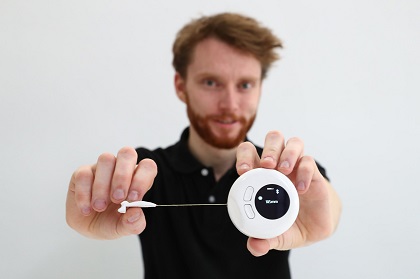
The engineers explained that the tape measures accurately, records and stores your measurements. Inbuilt audio then reads them out.
The four engineers behind the design are Jake Dean, Yuma Decaux, Woo Sung Jung and Weng Hou Chan from the Queensland University of Technology. Team member Yuma Decaux is blind and served as their inspiration to invent the tape measure.
"Yuma would come in to the servo a lot and we'd talk," said Jake Dean.
"He wanted to be able to renovate his house but specialized talking tape measures on the market were expensive, and couldn't find anything that suited what he wanted to do."
In 2012, it was estimated that there were 285 million visually impaired people in the world. New technology, or novel applications of technology, could be used to improve their lives. The engineers believe that the work they are doing under their startup, OSeyeris, will help visually impaired people find employment in industries they otherwise would have never been eligible for.
"People with little to no vision need to rely heavily on specialized measuring devices, but we hope that the Macaron will become the common and everyday household product that leads to a new way of measuring, recording and thinking," said Dean.
"Our team is so excited to be recognized for this year's James Dyson Award and can't wait to see what the future holds for the device."
The Macaron may just become the tape measure of choice for everyone.
Works Cited
Award, James Dyson. “James Dyson Award (@JamesDysonAward).” Twitter, Twitter, 18 Oct. 2018, twitter.com/jamesdysonaward?lang=en.
QUT. “Student Digital Smart Tech Measures Up.” QUT, QUT, 7 Oct. 2018, www.qut.edu.au/news?id=136528.
- Details
- Written by: Quintus Potgieter
Both men recently visited a number of countries, taking with them the passion for education and engineering that marks the Engineering Institute of Technology (EIT). They have travelled to share the opportunities EIT offers students who want to further their engineering studies, or who dream of becoming engineers - online or on campus in Perth, Western Australia.
Rolf and David will have packed many facts about EIT’s learning platform and approach into their deliveries. For instance, that EIT’s teachers are engineering experts from all over the world. And that they reach students in real time – whether they are on campus or online. They would also have spoken of EIT’s course content – that it is driven by the needs of industry and designed (and indeed re-designed) to be relevant, practical and useful.
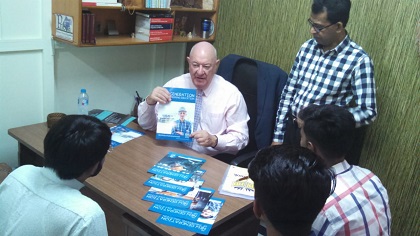
Rolf Baum, EIT’s International Recruitment Manager in the South Asia region, recently visited India and Pakistan to gauge the hunger for knowledge in the next generation of learners in those countries. He focused on EIT’s innovative course delivery and on the personalised support that students receive. He said:
“EIT is the only Australian Government approved Independent Higher Education Provider delivering courses in this discipline. We at EIT have a lot to offer international students through our extended experience and specialization in this industry.”
David Gadjus, our International Education Manager for the regions of Africa and South America, has also been globetrotting, having recently visited Lagos in Nigeria - the fastest growing, and most populated city in Africa.
There he visited the Engineering Faculty of the University of Lagos - meeting with their Dean of Engineering who is also the president of the African Engineering Education Association. Students were full of questions about EIT, but with the option of studying on campus, they were also eager to learn about student visas and the cost of living in Australia.
Moving on to Abuja Port Harcourt, David spoke to those already working in the industry, but considering opportunities to up-skill or gain professional development. He outlined the benefits EIT could bring to their workplaces. Then in Accra in Ghana, EIT held a recruitment seminar, where David presented to students who understand the value of education and who have a love for engineering and technology.
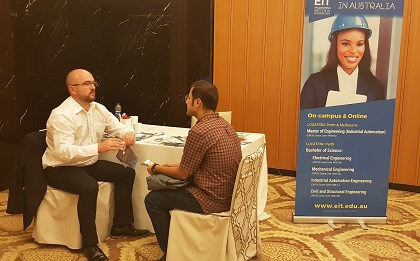
Then David went transcontinental. He traveled to Istanbul in Turkey. He said:
“An interesting fact, in the first day of meetings, I had one meeting in Europe, and one meeting in Asia!”
Istanbul is the only city in the world that is spread between two continents. He gained useful insights into Turkish educational markets. Together with Austrade and a number of Australian diplomats, EIT presented to students attending some of the best schools in Turkey. David also participated in the IDP Showcase event. IDP is the largest educational agency in the world.
Rolf Baum, on his side of the world, concluded:
“It was wonderful to be on the ground working closely with our quality partners. It was also good to chat to potential students; on the benefits of studying in a wonderful country like Australia and in a discipline that is critical – globally - today and in the future...and sharing how they could be a part of shaping that future.”
Baum went on to talk specifically about Perth, on the west coast of Australia:
“Having worked on the east coast for much of my career I have come to realise that Perth is a hidden gem, one which I wish I had discovered earlier. It provides the perfect setting for international students and offers a large range of benefits that our agent partners are now able to present to prospective students.”
For students interested in on-campus study, please contact
- Details
- Written by: Edwina Ross
This week the Engineering Institute of Technology (EIT) received some important visitors. A delegation of three (the CEO and two supporting managers) from the Engineering Council of South Africa (ECSA) spent two days at our head office and on our campus in Perth, Western Australia. ECSA is the equivalent of Engineers Australia, but with greater regulatory power.
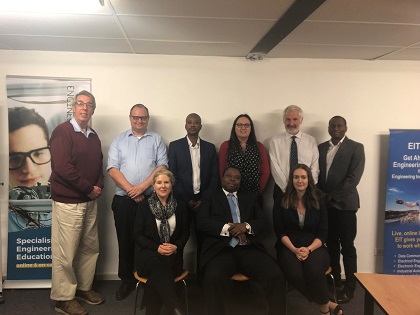
Back row: ECSA Council Member, Mr A Sentsho (third from left), Dean at EIT, Dr S Mackay (second from right), ECSA Executive Researcher, Mr M Gwazube ( end at right)
Their mission was to learn more about the online and blended learning platforms available for engineering education. The result of their research will be two-fold. South African education institutions can look forward to a robust set of protocols and standards on which to base their online learning methodologies. And those students unable to study on campus can look forward to an effective online education in engineering.
With a rapidly growing population the vocational and higher education institutions in South Africa are struggling to accommodate students of engineering. The option of expanding existing campuses, or building new ones, cannot be considered at this stage.
With this in mind Mr Sipho Madonsela, CEO of ECSA, explained that the wake-up call for regulators came with the student-based fees-must-fall campaign. In 2015 students began demanding free education and the resulting upheaval meant the universities had to abandon their lectures during those critical months leading up to the end of year exams. Many proactive and innovative engineering departments began offering lectures online to students unable to reach the campuses because of the student blockades. The efforts of the departments, however, were at best chaotic.
For Mr Madonsela, his colleagues and engineering Deans around the country an alternative approach is required; an approach methodically researched, planned and regulated.
We at EIT were delighted to show-off our online and blended platforms of learning to the ECSA team. Our students, based in over 100 countries, access a range of engineering diplomas, bachelor or master degrees, while they work.
We showcased the live, interactive sessions presented by our large pool of engineering practitioners and lecturers from around the world. They stream into the on campus classrooms and onto the computers of those students studying online; providing a ‘virtual’ forum where students and teachers can meet and discuss the content of their courses.
The ECSA team noted the benefits of EIT’s Learning Support Officers who are dedicated to the welfare of the remotely-based students.
They also became a little more familiar with EIT’s virtual and remote labs that interface with real equipment and which the students use to apply their learning. The inextricable link between engineering and technology means the internet has become a key part of modern engineering education and offers equivalence to physical delivery modes.
The ECSA team appreciated the importance of EIT’s remote invigilation software which was developed in house (and which continues to be honed in collaboration with Curtin University). It ensures student integrity - fundamental to quality education, whether delivered in a classroom or online.
EIT was honoured to host the ECSA delegation. We look forward to furthering the association as the Council prepares the online standards for South African engineering education.
- Details
- Written by: Quintus Potgieter
The fourth industrial revolution is disrupting so many engineering industries, the civil engineers are beginning to call it ‘Civils 4.0.' Mark Hansford, writing for New Civil Engineer, says the industry is on "the cusp of a technological revolution."
In a year of high-profile bridge collapses, the civil engineering industry has seen more disparaging headlines than it is comfortable with. Something needs to be done within the industry to ensure these catastrophic failures don't occur.
In 2018, innovative and pioneering methods of construction alike have been nitpicked after highly publicized failures have occurred. The first incident that had engineers scratching their heads was in May when the Florida International University Bridge collapsed onto a highway.
Then in August the Morandi Bridge in Genoa came down. In the first case, innovative methods of construction known as ‘Accelerated Bridge Construction’ saw some criticism. But Hansford says the highly publicized failures are no reason to prevent further innovation in the industry.

"Both collapses speak volumes about the support, both in design and delivery and then later, in operations and maintenance, that is needed to encourage innovation," said Hansford.
"Innovation is, by definition, doing the untried: the untested. Doing it is an inherently risky business and needs good support networks. But we need to do it. The art and the beauty of civil engineering is to innovate and evolve. It is also what the government is demanding, as we attempt to boost productivity in our sector.”
If the world were to criticize an innovative advent of technology in the engineering world based on one highly publicized shortcoming, innovation could cease to exist. It would be similar to avoiding nuclear power because of Chernobyl. Most informed individuals agree — innovation should not be stifled. While bridge collapses are bad, engineers need to continue innovating in the industry to ensure tragedies don't happen. This includes testing out new methods that could produce sturdier bridges in less time.
The startups are coming
A new culture of civil engineering is rising — a digital culture. The digitizing of the industry is inevitably snowballing as big data, machine learning and more infiltrate and disrupt. Naturally, new startup companies trying to capitalize on the digitization of the industry spring up to meet the demand for new efficiencies.
The New Civil Engineer’s Festival of Innovation and Technology happening on the 19th of September works with an accelerator program to help these kinds of startup companies out. The event has been organized to find the most promising startups in the civil engineering industry and assist with developing new, innovative ideas that can benefit the industry.
Below are some of the shortlisted participants who are close to getting real assistance with growing their companies into something that could change the civil engineering industry — or at least make it more efficient.
- Qualis Flow: They use the Internet of Things to better manage the impacts of construction. They aim to help businesses manage their resources more sustainably on construction and development sites, by gathering the data to support day-to-day decision making.
- Gear Buddy: They provide Internet of Things devices and a digital collaboration platform to help equipment suppliers, contractors, and equipment users connect more easily.
- nPlan: They help create complex construction schedules that build the cities of the future. Through deep learning and optimization methods, they create more efficient construction methodologies and scheduling for companies.
- CO-YOU: This startup has a plan for cleaning up the waste produced on construction sites. They are trying to get a construction packaging material patented that will absorb CO2 and biodegrade after use.
- Enable My Team: They have developed an automated asset recognition system that uses high-quality images that will assist in railway operations. "It will take this data and through AI and machine learning detect potential faults before they happen, allowing rail engineers to spend more time proactively mitigating risks rather than reactively fixing failures."
Works Cited
By Mark Hansford. “Five Game-Changers Picked to Present at TechFest.” New Civil Engineer, www.newcivilengineer.com/latest/five-game-changers-picked-to-present-at-techfest/10035151.article.
Hansford, 17 September 2018Mark. “Setbacks Should Not Prevent Us from Innovating.” New Civil Engineer, www.newcivilengineer.com/tech-excellence/setbacks-should-not-prevent-us-from-innovating/10035226.article.
- Details
- Written by: Quintus Potgieter
September has come and gone, and it has given us something to contemplate as we venture towards the final three months of the year.
Investigative journalism show, Vice aired an episode in September entitled: Engineering Earth.
The episode alluded to the fact that engineers and scientists are looking to a new era of geoengineering as a ‘last ditch effort' to mitigate the effects of global warming. The report asserted that a technological revolution may be necessary to curb the phenomenon of global warming.
Vice founder Shane Smith said after 50 years of research, engineers and scientists are aware that the level of carbon dioxide present in our atmosphere ‘exceeds levels that haven't been seen in three million years.' He said the world is clearly past the point of no return.
Visiting Greenland's Eagle glacier — a glacier that has experienced immense runoff — Smith spoke to Jason Box, a PhD contributor to Vice and a member of the Geological Survey of Denmark and Greenland. He said:
"On average over the last 15 years, the loss rate from Greenland would give all seven and a half billion people on the planet a bathtub of water every day. Even halting emissions now, we still have this problem of 50 per cent too much CO2 in the atmosphere. Plan A, which was conservation, has largely failed. Plan B, geoengineering, needs to become Plan A it seems. Can we technologically take control of this car that is spinning out of control and start driving in the right direction?”
So how can engineering technology and scientific endeavor work to circumnavigate the inevitable?
Potential solutions
Engineers and scientists are considering geoengineering. It is defined as the deliberate large-scale manipulation of an environmental process that affects the earth’s climate, in an attempt to counteract the effects of global warming. It could also be earth’s last hope.
Applied Physics Professor at Harvard University and author of the book: A Case for Climate Engineering, David Keith, has formed an engineering startup that is dedicated to developing technology that could suck carbon dioxide out of the air.
They have been working on a direct air capture plant that removes carbon dioxide from the air since 2015. There seems to be healthy competition in the direct air capture industry too. Other companies have come out of the woodwork to design their specially crafted technology, engineered to make capturing carbon dioxide air cheaper and more efficient. One company, Climeworks, bravely announced the world's first commercial carbon removal technology in 2017.
Keith told MIT Technology Review:
“One of the reasons I’m particularly interested in developing the possibility of solar geoengineering is that it does appear that the benefits are most felt by the poorest. And that's because the biggest climate impacts — particularly impact from extreme heat and extreme precipitation events like tropical cyclones — fall on the world's poorest. There is now pretty clear evidence that solar geoengineering would be remarkably effective in reducing some of those risks, and the relative benefits would go more to the poor than to rich.”
Keith also said finding technological methods to reflect the sun off the surface of the earth is essential to work.
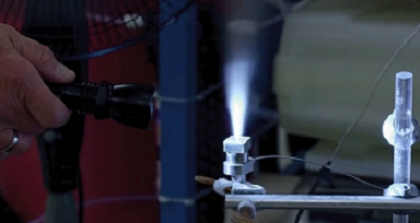
In Alaska, scientists are working with hollow glass microspheres hoping to exact Arctic restoration. The scientists say there has been a loss of the reflective heat shield in the Arctic. The reflective microspheres act as a reflective sand that offsets the sun beating down as hard as it usually does on the earth.
In Silicon Valley, engineers are working around the clock to find technologies that could keep the earth surface cool by brightening clouds. Armand Neukermans, engineer and physicist - and his team of engineers - are working on the technology that could improve clouds’ reflectivity at sea. The process is called marine cloud brightening, which includes spraying salt water into the sky to brighten clouds.
The engineers say an engineered nozzle could be fitted on ships at sea. These nozzles would emit salt particles and fuse with clouds hanging over the sea. The brightened cloud would reflect more sun off of it. Rising sea temperatures could be a thing of the past.
They also note that the possible adverse side effects could be less desirable. The impact of ongoing cloud brightening is being conducted by scientists around the world. That is the current balance that must be struck in geoengineering projects - the potential negatives that messing with the climate technologically could produce. Thus, the ethics behind companies who want to take on geoengineering projects need to be closely monitored.
Works Cited
“Engineering Earth (Preview) | VICE on HBO.” YouTube, 10 Sept. 2018, youtu.be/4iLhMV30S2o.
Temple, James, and James Temple. “This Scientist Is Taking the next Step in Geoengineering.” MIT Technology Review, MIT Technology Review, 27 July 2017, www.technologyreview.com/s/608312/this-scientist-is-taking-the-next-step-in-geoengineering/.
- Details
- Written by: Elyse Simich
A new report from the Australian Bureau of Statistics (ABS) shows female engineering graduates earned slightly more than their male counterparts for the first time in 2017.
These figures account for males and females who have completed an undergraduate engineering degree and have started in their first full-time role. According to the report, the median starting salary for female engineering graduates is $65k. For male engineering graduates, the median starting salary is $63.5k.
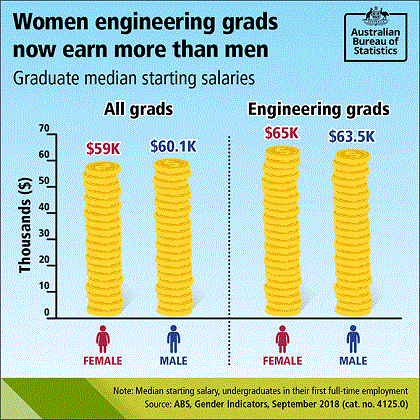
According to the ABS, female graduates still earn less than male graduates in 15 out of the 19 key industries but are on a par in the communications field.
These figures come from the Australian Graduate Outcomes Survey 2017, which was conducted by the Quality Indicators for Learning and Teaching (QILT) and released in February this year. They aim to provide students with relevant and transparent information about Australian higher education institutions from the perspective of recent students and graduates. The report is an aggregation of the experiences of recent graduates from 97 higher education institutions across the country.
The report also suggests the gender pay gap is closing. In 2016, the median full-time salary for female graduates was $3600 less than it was for male graduates across all study areas. In 2017, the difference in median wages fell to $1100.
HR director at engineers AECOM Helen Fraser told the Australian Financial Review back in February that the figures weren’t surprising.
"There is a shortage of technical talent for engineers. We are all fighting for the same group of people," Ms Fraser said.
Currently, women account for less than 20 per cent of engineering graduates. With companies now having to report on gender-balance, they need to try harder to attract women.
“It’s not the requirement to report, it's the desire to attract the talent. Because there is a shortage. There are more grads who have had multiple job offers - they have a choice,” said Ms Fraser.
The national president of Engineers Australia Trish White told Yahoo Finance that this is a reflection of the growing need for female graduates in the industry.
“The problem-solving of modern engineering is very human-centric, and so employers are looking to diversify their workforce, keen to recruit creative and communications skills as well as the technical,” she said.
“The difficulty is that only 13 per cent of working engineers in Australia are women, and the more experienced they are, the harder they are to find. So much so that we know of engineering companies that pay their staff ‘finders fees’ to bring in experienced women engineers for recruitment.
“It’s a great time for females to contemplate a career in engineering.”
While this is good news for new graduates, a joint report from the Bankwest Curtin Economics Centre and the Workplace Gender Equality Agency in 2016 demonstrated that the wage gap widens as time goes on, often because women take on family roles.
ABS Program Manager Dean Bowley said that young women are continuing to achieve higher levels of education than young men. The latest figures showed 45 per cent of women had completed a bachelor’s degree or higher before the age of 30, compared with 32 per cent of men.
“Despite this progress, there are still plenty of challenges,” he said.
“The gender pay gap has remained stable over the last decade, with women earning 89 per cent of the earnings of men, taking into account the differences in working hours. Superannuation balances for women approaching retirement are 37 per cent lower than men.”
The situation becomes more concerning at a postgraduate coursework level, where the median salary for female engineers is $15,000 less than it is for males. This was an increase from 2016 when the gap was $14,300. At a postgraduate research level, males typically out-earned females by $3000 in 2016 and $4500 in 2017.
According to Ms White, one of the reasons for this is the poor retention of women in engineering and a lack of female role models.
“Unfortunately women engineers are leaving the profession at greater rates than their male counterparts … It does mean there is a lack of female role models at higher levels. It’s hard to imagine yourself in a senior role if there isn’t anyone there that looks like you. I think that plays into promotion and pay rise negotiations as well,” she said.
“It’s not all a bad story, though, because some talented women engineers are being enticed by high salaries in banking and finance, which goes to show how transferable the skills of engineers are.”
- Details
- Written by: Quintus Potgieter
India celebrates Engineering Day on the 15th of September every year. Google, this year, decided to honor one of India’s most celebrated engineers -Sir Mokshagundam Visvesvaraya. He was the Google Doodle for the day. Behind him on the Doodle, is the work he is most famous for; the Krishna Raja Sagara Lake and dam.
Popularly known as Sir MV, he was a lead player in the construction of the Krishna Raja Sagara dam in the North-West suburb of Mysore City. It was early in his career that it was clear he had an affinity for irrigation systems. Soon after his studies, he became the sanitary engineer for the government of Bombay.

During his tenure in Bombay, he implemented a block system of irrigation that would provide irrigation for a large number of villages.
His mantra was: “Work is Worship”. When he looked at naturally occuring waterfalls, he knew that hydroelectric power could be harvested. He clearly had a knack for engineering. The government required his help - they needed to control some of their bodies of water in a better fashion.
A history of works
In 1909, he was enlisted to help prevent more floods in Hyderabad - which had just experienced a flood considered to be one of the worst in its history. It was thought that 15,000 people had lost their lives in the floods due to the Musi river being over capacity.
Flooding was not uncommon to the area, but the 1908 flood was particularly devastating. Some urban planning was thus necessary. Equipped with his knowledge of floodgates and reservoirs, Sir MV began work on remedying the situation .
Sir MV designed reservoirs that stored water that flowed over the Musi river’s capacity. He also built one across the Musi river tributary the Esi. Sir MV then went on to design a drainage system for Hyderabad that would prevent large scale flooding.
The region of Mysore then required Sir MV’s help. He became the Chief Engineer of Mysore State in 1909. He patented automatic weir floodgates at the beginning of the 1900s, and was determined to use them. He went on to implement these at Krishna Raja Sagara (KRS) in the biggest project of its kind at the time.

The main irrigation canal, an artificial tunnel that funnels water through it, was 2 miles long - an engineering feat India had never observed at that time in history. The Mysore area was suffering from an intensive drought before Sir MV had arrived. Agriculture was suffering immensely.
However, once the canal was implemented, sugar cane fields were able to be sustained which began a whole new sugar industry. As a result, civil engineering had immensely helped change the fate of a once barren, dry area.
He founded the Government Engineering College in Bengaluru in 1917. A college that was eventually named after him - embodying his craving for continuous societal improvement through technological advancement.
Sir MV was given the status of a Muslim council of state in 1912 in thanks for his contributions to civil engineering. He went to influence the rise of industry through the use of engineering technologies to create further prosperity. He authored books and pamphlets, detailing how the country should industrialize. He wrote an impressive list of books:
- Constructing India - Published 1920
- Rural Industrialization in India - Published 1931
- Unemployment in India: its causes and cure - Published 1932’
- Planned Economy for India - Published 1934
- Nation Building; a five year plan for the provinces - Published 1937
- District Development Scheme - Published 1939
- Prosperity Through Industry - Published 1942
- Village Industrialization - Published 1945
He dabbled in steelwork later in his career as well. He owned the Bhadravathi Steel Plant - creating steelworks that competed on a global market scale.
Even in his old age, he didn’t slow down. He drafted a document named the Rural Industrialization Scheme, asserting that the only way to inspire economic growth in rural areas was through industrialization. The Mysore government accepted the scheme and began its implementation. Soon, many states in India began implementing the scheme. He was also instrumental in suggesting where key infrastructure was to be placed.
In 1941 he founded the All India Manufacturers Organization. It’s motto was: ‘Prosperity Through Industry’. He was awarded the highest honor an Indian citizen can achieve: Bharat Ratna. He was named the Father of the Idea of Planned Development in the citation.
Sir MV showed that in a career of engineering, pausing work and being complacent is a waste of time. Even at an old age, an engineer can still be instrumental in inspiring societal improvement through engineering.
Works Cited
Bushan007. “Sir. Mokshagundam Visvesvaraya Documentary.” YouTube, YouTube, 19 Feb. 2014, www.youtube.com/watch?v=Uyhp7uu7o6c.
Hariharan, Revathi. “On Engineer's Day, Google Doodle Celebrates M Visvesvaraya's Birthday.” NDTV.com, 15 Sept. 2018, www.ndtv.com/india-news/engineers-day-2018-on-engineers-day-google-doodle-celebrates-m-visvesvarayas-birthday-1916818.
- Details
- Written by: Quintus Potgieter
Germany has unveiled not one but two Hydrogen fuel trains. It is being celebrated as a world-first.
The train can traverse 600 miles (1,000km) of railway on a single tank of hydrogen. What is significant about this number is that it matches what diesel trains can do. The new-fangled trains can reach a speed of 140km/h (86.99 miles per hour).
The fuel cells are positioned on top of the train. The cells combine hydrogen and oxygen, then transfer them to lithium-ion batteries inside the train. The train then emits steam and water. Another 58 zero-emissions trains are to be sold to Germany.
The train has been specifically designed to operate on non-electrified railway lines. To refuel the train, there will be a hydrogen refueling station Bremervorde where a 40-foot-high steel container will be pumped into the trains. The train is also quieter than its diesel-powered brethren.
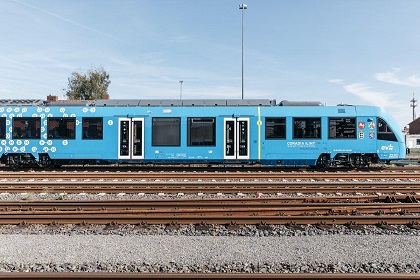
It is named the Coradia iLint, and is engineered by French sustainable mobility company Alstom. The train releases no emissions. It will take people from A to B on a 62 mile (100km) route between the towns and cities of Cuxhaven, Bremervörde, and Buxtehude.
Henri Poupart-Lafarge, chairman and CEO of Alstrom said:
“This is a revolution for Alstom and for the future of mobility. The world’s first hydrogen fuel cell train is entering passenger service and is ready for serial production. The Coradia iLint heralds a new era in emission-free rail transport. It is an innovation that results from French-German teamwork and exemplifies successful cross-border cooperation.”
The only question is: Will it be cheaper? A hydrogen train is more expensive to manufacture than a diesel train. However, Alstom says that the hydrogen trains will be cheaper to run and maintain in the long term - the same cannot be said for diesel trains.
Enak Ferlemann, Federal Government Commissioner for Rail Transport and Parliamentary State Secretary of the Federal Ministry of Transport and Digital Infrastructure said:
“Hydrogen is a real, low-emission and efficient alternative to diesel. These trains can be operated cleanly and in an environmentally friendly way, especially on secondary lines where overhead lines are uneconomical or not available yet.”
Works Cited
“World's First Emissions-Free Hydrogen Fuel Train Launches in Germany.” Interesting Engineering, 18 Sept. 2018, interestingengineering.com/worlds-first-emissions-free-hydrogen-fuel-train-launches-in-germany.
- Details
- Written by: Quintus Potgieter
In a digital world, higher education becomes a shapeshifter.
Even after graduation, continuous and life-long re-skilling and up-skilling is becoming a necessity. The difficulty for universities is to keep up with the demand for new forms of education and training as a result of the internet age. Brick-and-mortar institutions are facing digital expansion and are struggling to stay ahead.
And for the current workforce, advances in this world of digital transformation simply threaten their jobs. A skills shortage has arisen and will continue to deepen if workers cannot access new and relevant skills.
Big data, business automation, and intelligence solutions are now becoming commonplace in the vocabulary of a modern workplace. Digital literacy is critical and according to the Australian Industry Group’s 2018 Workforce Development Needs Survey, Australian companies are struggling to find aptly trained individuals.
Australia’s workforce
According to the survey, companies are beginning to take on more apprentices and those fresh out of school. 48.1 percent of employers in the manufacturing sector are employing apprentices and trainees rather than qualified university students. They concede that they cannot find adequately skilled graduates for the positions they need to fill.

The companies themselves are endeavoring to train their own staff. And for their more formal qualifications, they encourage them to study externally, but part time, alongside their full time work.
To this end employers are familiarizing their workers with new digital technologies and putting managers in place to facilitate the training.
According to the report, technicians and trades workers are the most in-demand skilled labor in the country, but are also named as the least prepared for the oncoming digital transformation of the workplace.
Graduates getting less pay?
School leavers will be opting to do shorter vocational courses as the future of work alters. So says the Grattan Institute, who published a report about an impending decline of university graduate pay premiums.
In the past it was a non-issue; if a graduate made it out of university, his/her job and pay prospects were much higher when compared with a technical and vocational practitioner. But now, professional jobs in a number of industries are drying up and the ‘graduate premium pay’ is dwindling, according to the report.
Higher Education Program Director at the Grattan Institute, Andrew Norton, referred to statistics that pointed to the fact that 41.9 percent of 19 year olds in Australia were in university. He said:
“This feeds the argument that too many people are going to uni. People are taking very high risks in going to uni. My concern is there is a cultural juggernaut pushing young people into higher education when a more dispassionate analysis tells us it is not necessarily such a good idea. I think a logical extension is reviewing vocational education and training. Some people may choose the VET alternative over higher ed and that’s a good thing. A young guy with an ATAR of 60 would have earned more with a diploma than a graduate degree.”
The report shows that a woman with a bachelor degree in 2006 could expect to earn AU$15,000 more than a school leaver. And now - the report states the premium went to less than AU$13,000 in just a matter of years.
Universities Australia Chief Executive, Catriona Jackson, disputes the statistics and insists university graduates are still seeing an earning premium. She told Perth Now:
“While there has been a slight decline in the size of that advantage over a decade, that advantage is still pretty significant.”
What the report does not factor in, however, are alternative education and training options that ensure students can immediately offset the debt they accrue at university. Innovative online education institutions offer degrees alongside full time work and they also provide ongoing professional development.
Works Cited
Hiatt, Bethany. “Uni Degrees 'Aren't Paying off' with Jobs.” PerthNow, PerthNow, 16 Sept. 2018, www.perthnow.com.au/news/education/uni-degrees-losing-worth-in-jobs-market-find-grattan-institute-report-ng-b88962367z.
“Home.” Australian Industry Group, www.aigroup.com.au/.
- Details
- Written by: Quintus Potgieter
Could solar and wind farms create gardens of Eden in the desert?
According to a newly published study in the popular journal, Science, bringing rain to the desert with solar arrays and wind turbines is not far-fetched. The study is entitled: ‘Climate model shows large-scale wind and solar farms in the Sahara increase rain and vegetation’.
The researchers assert that as each solar and wind farm grows in size the ‘consequences’ for the climate increase too. With solar panels on the ground, the earth reflects less heat back into the atmosphere. And when turbines spin, warmer air is combined with cooler air. These occurrences can change the local climates.
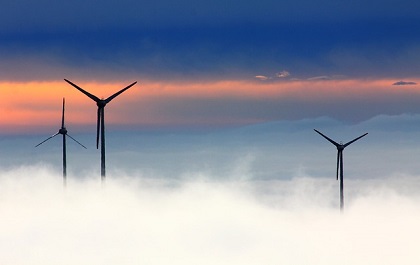
Utilizing a climate prediction model, researchers suggest that rainfall would increase and with this more vegetation would grow.
This is not the first time scientists have asserted that big solar farms and wind farms could cause climate change. In 2012, the journal Nature put out a report that pointed to how wind turbines raise temperatures. The story looked at satellite imagery over Texas - a state with some of the world’s largest wind farms - and found that over a decade the temperature was raised by 0.72C (1.3F).
Speaking to the Telegraph in 2012, Liming Zhou, Research Associate Professor at the Department of Atmospheric and Environmental Sciences at the University of New York, said:
“Wind energy is among the world’s fastest growing sources of energy. The US wind industry has experienced a remarkably rapid expansion of capacity in recent years. While converting wind’s kinetic energy into electricity, wind turbines modify surface-atmosphere exchanges and transfer of energy, momentum, mass and moisture within the atmosphere. These changes, if spatially large enough, might have noticeable impacts on local to regional weather and climate.”
While climate change - and global warming - is mostly viewed as negative, bringing vegetation to the ever-creeping Sahara Desert may be more positive.
The latest study published in Science was completed by scientists at the University of Maryland. They considered climate and vegetation models and tested a theory that solar and wind farms could create a favourable climate in areas like the Sahara and Sahel. The theoretical result indicated that more rain would indeed fall in those areas.
Safa Motesharrei, UDM Systems Scientist and a lead author of the paper, told Engineering & Technology:
“The Sahara, the Sahel and the Middle East include some of the driest regions in the world while experiencing high growth of population and poverty. Our study has major implications for addressing the intertwined sustainability challenges of the ‘Energy-Water-Food’ nexus in this region.”
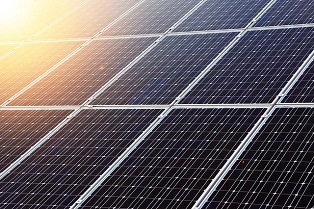
This study – with the promise of increased rain and vegetation - offers a solid counter-argument to those that suggest large-scale wind and solar farms adversely affect the climate.
The researchers at Maryland write:
“Our simulations show that both the wind and solar farms in the Sahara contribute to increased precipitation, especially in the Sahel region, through the positive albedo-precipitation-vegetation feedback.”
And the added benefit to solar and wind, in the long term, will be the replacement of fossil fuel technologies which currently power desalination plants. Motesharrei notes:
“Moreover, the availability of vast quantities of clean energy would allow for desalination of seawater and transporting it to the regions that suffer most from severe freshwater scarcity, in turn, leading to improvement of public health, expansion of agriculture and food production and even restoration of biodiversity.”
Works Cited
Gray, Louise. “Wind Farms Can Cause Climate Change, Finds New Study.” The Telegraph, Telegraph Media Group, 29 Apr. 2012, www.telegraph.co.uk/news/earth/earthnews/9234715/Wind-farms-can-cause-climate-change-finds-new-study.html.
Li, Yan, et al. “Climate Model Shows Large-Scale Wind and Solar Farms in the Sahara Increase Rain and Vegetation.” Science, American Association for the Advancement of Science, 7 Sept. 2018, science.sciencemag.org/content/361/6406/1019.
- Details
- Written by: Quintus Potgieter
The convergence of machine learning and engineering is perhaps the most important crossing of paths in modern times.
Companies in a plethora of industries are expected to (and already are) opting-in to the AI future. As technology advances, it is up to the prospective engineer to adapt to the innovation that is occurring and use it to their advantage.
Machine learning and certain levels of AI have seen in the automated industrial warehouse. However, ‘AI’ and ‘machine learning’ have become a little like buzzwords in the engineering world today. Entry-level engineering students might be questioning what exactly might be impacting the future workplace they are studying towards. What does this so-called threatening AI look like?

CEO of machine learning company Iprova, Julian Nolan explains:
“For example, a smart microphone could have embedded algorithms that normalise input audio levels and clean out an adjustable level of background noise. If it does this in real-time to minimise the need for post-production, it doesn’t mean the microphone uses AI; it is using algorithms that can process data very quickly. It’s impressive, but it isn’t quite AI.”
Nolan even makes the distinction that the digital assistants from Amazon, Samsung and Google - that are seemingly artificially intelligent - lack the hallmarks of what a truly artificially intelligent system might look like.
He explains:
“But while we’re still many years away from truly using AI in many electronic products, AI is already beginning to transform the development of new electronics at the invention stage. Iprova, for example, uses advanced machine learning to converge myriads of data from seemingly unrelated industries to generate truly novel intentions for their clients.”
Electronics and AI
Bringing data generated in several different engineering industries together could lead to new technologies that could potentially change the world. Getting computers to correlate and compare data from seemingly unrelated industries and suggest new inventions out of it is when AI will genuinely be considered sentient. Alternatively, so alludes Nolan. He calls this ‘augmenting human intelligence’.
However, the embedding of a machine learning within electronics is becoming industry standard, at the moment. Every smartphone must act as a smart, almost human, personal assistant these days. The cameras inside electronics are getting much better, too.
Stanford University engineers have thrown their AI-prowess behind image recognition technology. They have developed an artificially intelligent camera that recognizes objects it ‘sees’ in the real world, much faster than previous camera systems before it. It is more energy efficient as well.

Gordon Wetzstein, an assistant professor of electrical engineering at Stanford, who led the research, alluded to the fact that this would help minimize the reasonably large, ‘energy intensive’ computer that runs inside of a self-driving car. The engineers at Stanford have experimented with fusing an optical computer, with a digital electronic computer to speed up the image recognition.
The engineers intend to continue engineering the computers so a camera can recognize its surroundings at (literally) the speed of light. Autonomous vehicles have to make the same split-second decisions that humans do when controlling a car. The engineers say that the marrying of the two computer types gives lessens the mathematical load required. The optical computer preprocesses the image data through a customized optics layer via light and subsequently does a lot of the precise number crunching.
The engineers at Stanford say this saves a lot of time and energy otherwise consumed by computation in single computer systems. The engineers plan to continue making the system smaller and smaller, and improving autonomous cars as they go along.
Works Cited
“How AI Is Helping Engineers Invent New Ideas.” Mechanical Engineering History Timeline - IMechE, www.imeche.org/news/news-article/how-ai-is-helping-engineers-invent-new-ideas.
Stanford University. “New AI Camera Could Revolutionize Autonomous Vehicles | Stanford News.” Stanford University, 22 Aug. 2018, news.stanford.edu/2018/08/17/new-ai-camera-revolutionize-autonomous-vehicles/.
Williams, Alun. “Comment: How AI and Convergence Turns Electronic Engineers into Invention Developers.” Electronics Weekly, 14 Aug. 2018, www.electronicsweekly.com/news/comment-ai-convergence-turns-electronic-engineers-invention-developers-2018-08/.
- Details
- Written by: Quintus Potgieter
The advancement of technology has its advantages, especially for rural areas and low-income households around the world. With microsystems and nano-engineering, processes can be made more efficient and the cost of operation reduced.
Also, some engineers have turned their skills in this direction, designing complex wearable technologies that are improving, and in some cases saving people’s lives. Wearable technologies are revolutionizing industries as they focus on the health of workers usually at risk.
For example, miners, inside mines, can utilize wearable technologies to monitor their health and safety underground. Also, innovation is continuing.
Engineers at the University of British Columbia have invented an ultrasound transducer. A transducer is a device that converts a variation in a physical quantity, such as pressure or brightness, into an electrical signal or vice versa.
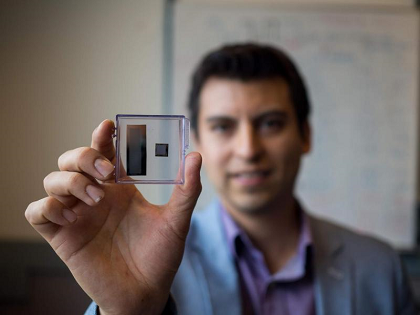
Essentially they have designed an ultrasound sensor that can be carried around in a pocket. So, how did they do it? It’s all up to the transducer. Instead of piezoelectric crystals, which allow us to see inside the body with traditional ultrasound scanners, they have used ‘small vibrating drums made from a polymer resin’.
Lead author on the study, Carlos Gerardo, a PhD candidate in electrical and computer engineering at UBC said:
“Transducer drums have typically been made out of rigid silicon materials that require costly, environment-controlled manufacturing processes, and this has hampered their use in ultrasound. By using polymer resin, we were able to produce polyCMUTs (polymer capacitive micromachined ultrasound) in fewer fabrication steps, using a minimum amount of equipment, resulting in significant cost savings.”
The technology only needs 10 volts to function, so a smartphone can thus power it. The resulting sonogram is purportedly a more precise, crisper sonogram than those using piezoelectric transducers.
Ultrasounds are not the only use for this technology. The researchers insist that they can look under the skin for arteries and veins and can scan heart activity through the chest. The technology should benefit many because of its ability to monitor a range of health issues at a fraction of the cost. The researchers believe, at market value, the tech will cost USD$100.
Works Cited
Gerardo, Carlos D., et al. “Fabrication and Testing of Polymer-Based Capacitive Micromachined Ultrasound Transducers for Medical Imaging.” Nature News, Nature Publishing Group, 27 Aug. 2018, www.nature.com/articles/s41378-018-0022-5.
“New Technology Yields Cheaper Ultrasound Machine.” Research & Development, 11 Sept. 2018, www.rdmag.com/article/2018/09/new-technology-yields-cheaper-ultrasound-machine.
- Details
- Written by: Edwina Ross
SA Power Networks is South Australia’s electricity distributor. And what a dynamic organisation it is too.
Steve Mackay, the Dean of the Engineering Institute of Technology, and a colleague were shown through the building at 1 Anzac Highway in Adelaide, on the morning of the 28th of August by Barney Nyirenda, the designated guide. He certainly knew his stuff and was clearly proud to be a part of this great company.
That afternoon Steve was invited back for a graduation; a number of SA Power employees had completed their advanced diplomas. Some were graduating from a TAFE qualification and some from EIT’s Advanced Diploma of Applied Electrical Engineering.
Steve was honoured to address the audience of students and support staff. He congratulated them earnestly – expressing his deep pride in their achievements. As an experienced engineer himself he also outlined a number of ways the graduates could boost their careers.
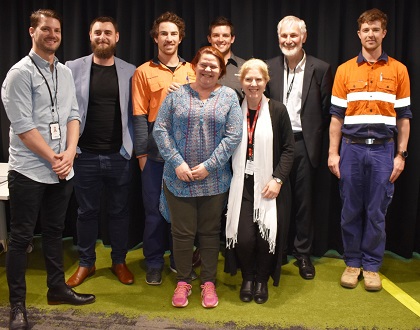
He urged them to remain positive; to be the problem solvers, not just the fault finders. But he did recommend that they do the necessary research before making decisions, and to always consider the worst-case scenarios.
He pointed out the importance of communication skills – suggesting that these softer skills were critical to the success of engineering professionals.
He spoke of the importance of fitting into an organisational culture – particularly one as positive as SA Power Networks. And urged the graduates to be innovative; building value into everything they do.
Business and entrepreneurial skills, he suggested, needed honing even when working for an employer. And linked with this, Steve advised them to keep their technical expertise sharp – with an eye on what the marketplace needed.
He counselled them to be friendly, positive and respectful, to all fellow workers - throughout the organisation. He explained that they would receive support of others in return.
He concluded by urging them to make learning – in all its guises – a life-long ambition and in everything, to follow their hearts (yes, an engineer said this).
For his final comment Steve drew on one of his heroes’ directives to never, never give in and never give up – a theme Sir Winston Churchill repeated throughout his life.
- Details
- Written by: Quintus Potgieter
Biomedical engineering is continuing its amalgamation of individual disciplines of engineering, fusing it into one discipline that has the health of humanity as its core focus.
A host of startups and companies are developing technologies that will assist the healthcare sector and keep people healthier. United States company, Neocis, is one of those companies. They specialize in Precision Healthcare Robotics.
The Vice-President of Operations and fellow co-founder Juan Salcedo has over a decade of experience in manufacturing and mechanical design for the medical device industry. He holds a Bachelor of Science in Mechanical Engineering and a Master of Science in Biomedical Engineering from Florida International University. The Director of Software, the Director of Manufacturing, and the Director of Clinical Marketing have backgrounds in mechanical engineering too.
One of the robots they have engineered is a dentistry assistant named Yomi, who is particularly gifted at doing dental implants. Starting with a CT scan of a patient's mouth, the robot can analyze the image and find the exact area where an implant is needed.
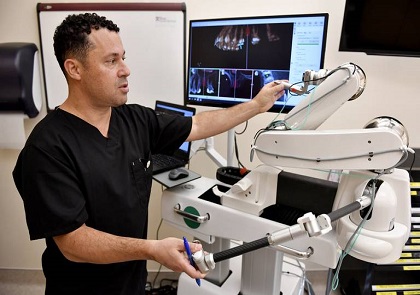
And now, the first dentist in the world to use a robotic assistant has feedback.
Dr. Eddie Kotary is from State College and has opted for the dental assistant.
Kotary, however, does appreciate the concern people might feel about a robot inspecting the inside of their mouth. Nonetheless, the dental robot is not yet artificially intelligent and performing operations by itself, it is merely used for assistance — the professional is still crucial in the equation...for now. He said:
“A common misconception among patients is that the robot does surgery. I still perform the surgery and the machine helps to guide my direction.”
Kotary has done 10 surgeries and all have been successful. He has compared the robot to a Tesla vehicle — instead of driving for you, it helps you drive more accurately. According to Centre Daily, the robot ensures that a patient recovers quicker than traditional surgery, and it drives the cost of an implant down by US$500.
The South Florida Center for Periodontics and Implant Dentistry in Boca Raton, Florida, have just taken on their own Yomi robot after undergoing training to use their new robot assistant.
In rural areas, orthodontics, dentistry, and general healthcare is few and far between. Robots could potentially be implemented in third-world countries to provide dental healthcare. But for now, the Yomi Robot is a sizeable investment for a dental healthcare company to make, as it carries a hefty price.
Mechanical engineers could be crucial to the designing and implementing of surgery-assisting robots. If they are involved in every step, they could bring down the cost of these robots and help rural areas get access to the kinds of robotics that could save their lives, or at least their teeth.
Works Cited
Romanowski, Isabel. “Yomi, Oh My! A Local Dentist Is the World's First to Use a Robot Assistant.” Centredaily, Centre Daily Times, www.centredaily.com/latest-news/article217524480.html
https://www.neocis.com/
- Details
- Written by: Quintus Potgieter
As the seasons change and the Northern Hemisphere gets a taste of what the Southern Hemisphere was feeling during winter, commuters on London's Underground could not be more ready for winter than right now.
In the month of August, London observed a sweltering heat wave that scorched the region for days on end.
To quell the effects of the immense heat on one's body, travelers could opt to go underground and use the Tube to get around. Except, Londoners have been complaining about the heat in the Tube too — it has been running for so many years that the earth surrounding it can no longer absorb the heat it emits.

The Tube's construction began in the 1800's, with the Bakerloo line opening in 1906. The initial marketing strategy included a line about how it was the ‘coolest place to be' in hot summer weather.
But all that has changed. Travelers have reported that the temperatures inside the Tube on the Central Line have skyrocketed, making for an uncomfortable commute. So, why is it so hot?
Basically, the heat felt in the tube comes from the train's mechanisms itself.
Rail Engineering's Brian Tinham compiled a report entitled ‘Cooling the Tube' in December 2007, that directly pointed out the sources of heat causing discomfort for passengers. They wrote:
"A little detail: primary heat sources are 38% breaking losses, 22% mechanical, 16% drivetrain, 13% train auxiliaries, 4% tunnel support systems, 3% passengers in trains and 4% passengers on stations."
The London Tube tunnels were dug under Subterranean clay. The clay has been heating up, essentially turning the Underground into a clay oven, with little space for air conditioners. Trains are hot, and in a clay oven, they are even hotter.
More worrying is the expansion of the tube. Engineers are currently rolling out the Elizabeth line, which is set to open in the autumn of 2019. The overarching problem with this new expansion is that more trains equals more heat. The older lines are deeper with less ventilation. The issue is, the hot trapped air is being absorbed by the walls, but the earth does not seem capable of absorbing much more heat than it already is. Temperatures inside the tube reach up to 30 degrees Celsius (86 degrees Fahrenheit).
In 2003, the mayor of London at the time, Ken Livingstone, offered a prize of £100,000 to the mastermind who could come up with a good solution to cooling down the Tube. But it seems that prize has gone unclaimed.
The layman's solution to this would simply be installing a lot of air conditioners to keep the tunnels cool. But, Rail Engineering says, ‘not so fast'. Transport for London (TfL) Cooling the Tube programme director Kevin Payne told Rail Engineering that it is a bit more complex than just putting air conditioners in.
“Payne estimates that removing heat from the network this way costs the upper end of 10 to 50 times as much as putting it in. Partly, also, it’s because warm air from the heat exchangers would have to go somewhere and, given the restrictions on building new ventilation plants across central London, it simply can’t.”
Another problem on the Central Line is that the trains run too deep and don't leave enough space for air conditioners. Engineers have, however, promised that a more sophisticated air conditioning system is coming, but only in 2030. In the meantime, they have introduced an experimental fan-based cooling system at Paul's Tube station. A report by Wired explains how it works:
"The system, which was designed by London Underground's crack cooling squad, pulled fresh air from the street and pumped water around pipes at a rate of 16 liters per second to cool the air by seven degrees before pumping it out at platform level. As a result, St Paul's has gone from one of the hottest stations on the Central Line to one of the coolest."
Passengers have taken to social media to express their disdain with the temperatures inside the carriages of the Underground. The temperatures even rose past the EU guidelines for transporting cows and sheep. The end of the heat of the Central Line is not in sight just yet, so, it falls to engineers to be the light at the end of the tunnel and fix the heat woes in London's Underground.
Works Cited
Temperton, James. “Why Is London's Central Line so Hot? Science Has the Answer.” WIRED, WIRED UK, 10 July 2018, www.wired.co.uk/article/central-line-temperature-london-weather-heatwave.
Rail Engineering, Cooling the Tube, as reported by Brian Tinham : http://www.plantengineer.org.uk/article-images/23757/cooling.pdf
- Details
- Written by: Quintus Potgieter
Engineers are exceptionally skilled at designing products that assist people who are disabled. But it's not often that we see a disabled person engineering for those who are able-bodied.
While millions of people use cruise control every day, many wouldn't know that it was invented by a blind engineer. His name was Ralph Teetor.
When he was five-years-old, he was blinded in an accident involving a knife. He then suffered from sympathetic ophthalmia — the other eye went blind as a result of the trauma to the first.
Ralph had a knack for engineering from an early age. He would tinker with parts in his father's workshop, from ten-years-old. He developed a talent for feeling mechanical objects and designing parts despite his disability. His hands had become his eyes. He believed he could have a future in engineering.
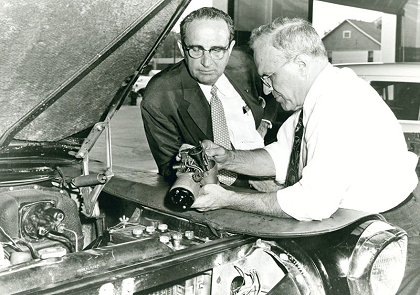
After high school, many universities refused his applications based on his disability. Nonetheless, he eventually got enrolled at the University of Pennsylvania in the mechanical engineering department.
He graduated from university and went to work in the U.S. Navy, where he performed engineering maintenance on warship steam turbines. After leaving the Navy, his father and three of his uncles recruited Ralph for their piston ring production company named Perfect Circle. He eventually became the President of the company and tinkered away on his own small projects too.
He also became the President of the Society of Automotive Engineers (SAE).
During World War 2, war rationing forced motorists to drive 35 miles-per-hour so that they could save on gas. Consequently, Ralph began work on a mechanism that could assist motorists in sticking to one speed during a commute, without having to regulate it themselves.
In 1948, the ‘Speedostat' was born. A decade later, they finally finished engineering a prototype that could confidently be used in vehicles.
The first prototype included a vacuum-driven piston capable of stopping the gas pedal from being pushed far enough.
Nonetheless, true cruise control would have to keep the driver at a constant speed, not just slow it down. That's when Ralph added a ‘speed lock' mechanism with the help of an electromagnetic motor. Upon the tapping of the breaks, the speed lock would be canceled out.
By 1958, Chrysler wanted the Speedostat in their cars and started adding it as an option to their luxury cars. By the 1960s, all General Motors' Cadillacs had it - and its name changed to ‘cruise control.' Then in 1973, when the Organization of Arab Petroleum Exporting Countries (OPEC) decided to stop selling oil to the United States due to political factors at the time, cruise control was lauded as an oil-conserving savior.
Ralph Teetor's legacy proves that despite disability, engineers can defy the odds and create something that completely revolutionizes technology and improves lives. It shows that anyone can overcome a setback and still contribute to humankind.
The invention of cruise control made people wonder how much further vehicles could be automated at the time. Fast forward to today, and we are on the verge of driverless cars.
Works Cited
“The Inventor of Cruise Control Couldn't See.” YouTube, 31 July 2018, youtu.be/298Rb9wNwMg.
Sears, David. “The Sightless Visionary Who Invented Cruise Control.” Smithsonian.com, Smithsonian Institution, 8 Mar. 2018, www.smithsonianmag.com/innovation/sightless-visionary-who-invented-cruise-control-180968418/.
- Details
- Written by: Quintus Potgieter
A full rotation of the earth around its own axis produces patterns and rhythms in nature known as the diurnal cycle. Ever since human beings could perceive that the sun rose in the East and set in the West, the assumption was that there was a passage of time.
Then came the measuring of time. Lunar cycles were observed, sundials and water clocks became commonplace in some societies. These all pointed towards evidence that the telling of time could be linked to the diurnal cycles of the earth. By the 14th century, in Europe, mechanical clocks were invented, leading to the engineering of the grandfather clock in 1657. Consequently, the world saw a rise in the ordering of human life around the clock.
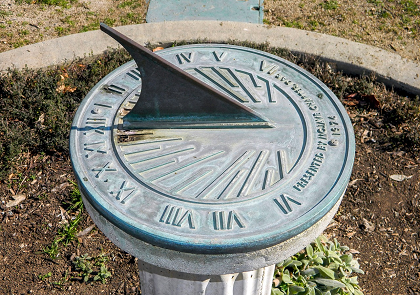
With more and more humans telling time, and governments trying to agree on what the real time was, there was a worrying trend developing in the United States. In the 1880s, each American town had established their own local times based on their reading of the sun. And this caused a headache for the railroad industry. Specifically, the coordinating of trains.
Great Britain resolved in 1840 to begin adhering to a standardized time for their railways. It would be known as the Greenwich Mean Time (GMT). From 1846 to 1848, the railroad stations across Great Britain were all synchronized according to the GMT time. America was having troubles too.
Bafflingly, when it was 6:28 am in Los Angeles, it was 9:28 am in New York. Thus, if each town had its own time defined within its own borders, going cross-country in a train would prove dangerous because two trains traveling on one railroad would want to arrive at the same time — but with the train drivers thinking it was a different time. Metaphorically and literally, it would have been a train crash waiting to happen.
The different states in America realized they would not be able to solely rely on their state-specific reading of time.
In 1918, the American Congress heard and accepted the idea of a standard railroad time. Eastern, Central, Mountain, and Pacific times. Congress eventually passed the Standard Time Act in 1918 and standardized time.
Since then, the rest of the world became dependent on timezones collectively defined with the lesson of railroad travel in mind. GMT has been spun-off and refined into Coordinated Universal Time (UTC), utilizing the advent of atomic clocks which tell time much more accurately. America still adheres to their four time zones that were standardized in 1918.
The change trains and railroads brought to the world, and human life was characterized as the ‘annihilation of space and time’ - engineers had achieved a physical change to the world that had never been observed before. A psychological shift followed - humans became accustomed to a world of travel, speed, and power. And as a result, led to more technological expansion. Many technologies like global positioning systems and the computers that have given rise to them rely on an understanding of atomic time in the present moment.

The world is now observing the fourth industrial revolution. An advancement of technology that could once again disrupt our perception of time, space and energy. As quantum physics’ exploration continues and gives rise to technologies like quantum computing, nanotechnologies, and more, the boundaries of possibilities are growing further and further outward. What this will mean for the majority of engineering industry still remains to be seen - however, the effect is poised to be significant.
How will engineering change human perception of the natural environment next?
Works Cited
“How Did Trains Standardize Time in the United States? - William Heuisler.” YouTube, 5 Feb. 2013, youtu.be/UBpTohx1BOc.
“The Order of Time by Carlo Rovelli.” Penguin Books, www.penguin.co.uk/books/301539/the-order-of-time/.
“The Railroad Journey and the Industrial Revolution: Crash Course World History 214.” YouTube, 1 Nov. 2014, youtu.be/GYAk5jCTQ3s.
- Details
- Written by: Quintus Potgieter
What is a side-hustle?
It's really anything that you can do on the side to make money while pursuing higher education or employment. It may be a hobby you are trying to monetize for a little bit of extra cash, it may be a serious venture you are working to pursue but unable to generate an income from just yet, or it may be something you've already started that is producing some extra income for you.
Some qualified engineers take it a step further. Many understand that the traditional trajectory of getting qualified, finding a big company to fit into and staying there for 40 years is a thing of the past.
Some engineers are becoming part of the gig economy. The gig economy is a ‘labor market characterized by the prevalence of short-term contracts or freelance work as opposed to permanent jobs.' And some people have side-gigs to supplement their income while they continue to search for a more permanent position elsewhere. Prospective engineers are learning to become resilient.
Engineers are noticing that they can also create several side-hustles that generate money they can use to achieve even bigger things later on in life.

In the engineering world, the side-hustle usually culminates in a startup idea that requires the input of some like-minded team members. Nonetheless, when you pursue a side-hustle, it's important to make sure you still have the backup plan.
Previously, the backup plan might include a ginormous time investment of going to a brick-and-mortar tertiary institution and putting the side-hustle on pause. Starting a side-hustle while sticking to a strict schedule of classes and examinations is a tall order.
Early on, some engineers fail to realize that their engineering course may be teaching them the business principles they need to become an entrepreneur. Albert van Wyk is a South African industrial engineer. At the age of 22, he was already investing in property and building side-businesses that began generating an income. He became one of South Africa's youngest millionaires.
Albert went on to write a book titled: ‘How to become a Millionaire at 22.'
But it was the skills he was learning in his engineering degree that improved the business-side of his side-hustles. He has started a podcast named ‘Millionaire Insights with Albert van Wyk,' where he inspires like-minded engineers and entrepreneurs in South Africa, to become better businesspeople whilst upskilling and acquiring formal qualifications.
In the latest episode of his podcast, he said:
“I studied Industrial Engineering. I actually completed my degree in four years and became an industrial engineer. And then, I worked for one year in the industry as an engineer before I quit my job to become a full-time entrepreneur. One of the key terms that we learned in industrial engineering is called a value chain analysis. You take each process, each activity, in your chain of events that creates value for your business, and you analyze each of them.”
Industrial automation engineering can teach that, even in business, a person can produce an efficient chain of procedures that leads to the creation of a valuable outcome. But even mechanical engineers are obtaining their qualifications, then swimming against the tide.
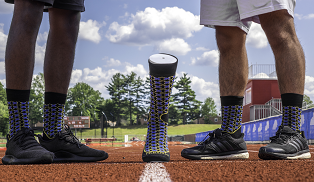
Inaam Khan is a mechanical engineer from Manchester, Connecticut in the United States of America. His motto, and advice to prospective entrepreneurial engineers is: ‘Aim high, don't be shy.' He founded his own sock company after graduating. He aptly named the company I-Khanic. In an interview, he said:
“My parents have been very supportive, first of all. They never cared that their son had an engineering degree and was out there selling socks.”
Turning the side-hustle into the main-hustle takes grit and determination. It is recommended that students and graduates continue to upskill themselves — so they are job-ready and educated — while trying to be as entrepreneurial as possible.
Works Cited
Nyberg, Ann. “Manchester Mechanical Engineer Inspired by Social Media Launches Sock Company.” WTNH, WTNH, 14 Aug. 2018, www.wtnh.com/on-air/nyberg/manchester-mechanical-engineer-inspired-by-social-media-launches-sock-company/1366407095.
“Millionaire Insights with Albert Van Wyk.” Iono.fm, Https://Iono.fm/p/360, iono.fm/c/3590.
- Details
- Written by: Quintus Potgieter
ZipRecruiter, one of America's top job recruitment sites, has reported that the most in-demand jobs are in the electrical engineering industry. The site is visited by millions of people every day, and the most searched for positions — in fact, the top five searches — were all pertaining to electrical engineering.
The searches ranged from entry-level electrical engineering jobs for advanced diploma holders, up to the kinds of jobs that require Professional Engineer recognition. ZipRecruiter confirms many of the inquirers are looking to be electricians on construction sites. Other inquiries are for particularly specialized positions within electrical engineering.
But, mostly, skilled workers are looking for any jobs they can get in the electrical engineering field. Furthermore, ZipRecruiter has indicated that these job seekers are often looking for a promotion.
The report interestingly stated:
“Given the high demand for and low supply of these workers, it’s likely that most of these job hunters are already employed and looking to level up into higher-paying positions.”
Worryingly, the supply of workers cannot keep up with the pace of electrical engineering jobs being listed in the US. The site has its own ZipRecruiter Opportunity Index which takes a look at the availability of workers versus how many jobs had been listed. The index in electrical engineering resulted in a 1:4 ratio. There is one worker to every four listed electrical engineering jobs on the website. Moreover, for electricians, the ratio was 1:5.
Those ratios are the averages across the entirety of the United States. The numbers in state-specific data sets seem to look even more concerning.

Start studying (and working)
The numbers have highlighted a big need for qualified and skilled individuals in the United States. ZipRecruiter says the data also indicates that electrical engineers and electricians should be open to relocating. For example, in Ann Arbor, Michigan there were nine electrical engineering jobs open to one applicant at a time. In the New York metropolitan area, the highest number of applicants existed. Detroit apparently had the biggest labor shortage of all.
The data is also telling a poetic story about the situation throughout the rest of the world. Students are encouraged to examine the job listings for a particular country and assess which engineering disciplines are in demand, before picking a discipline to pursue. They are also encouraged to upskill and gain qualifications for the available jobs they could qualify for.
Shortages across Australia
CNBC reports that Australia is also seeing a rise in job listings for site engineers and electrical foreman. The construction and property market is purportedly on the rise, and that means that electrical systems for new developments will be required.
According to an article written by the Dean of Engineering at the University of New South Wales (UNSW) Sydney, and an Associate Professor in UNSW’s School of Minerals and Energy Resources Engineering, electrical engineers in Australia currently make a median salary of US$46 693.72 per year.
Works Cited
“Electrical Engineers, Electricians in High Demand in These Markets.” The Bay State Banner, 15 Aug. 2018, www.baystatebanner.com/2018/08/17/electrical-engineers-electricians-in-high-demand-in-these-markets/.
Gilchrist, Karen. “These Are the Best Jobs in Australia Right Now.” CNBC, CNBC, 4 Sept. 2018, www.cnbc.com/2018/09/04/best-jobs-careers-australia-teaching-tech-construction-healthcare.html.
z3524864. “Mining Bust's Gone and the Boom's Back: We Need Engineers.” UNSW Newsroom, 29 Aug. 2018, newsroom.unsw.edu.au/news/general/mining-bust’s-gone-and-boom’s-back-we-need-engineers.
- Details
- Written by: Quintus Potgieter
China was abuzz at the 2108 World Robot Conference 2018 in August. Manufacturers from around the world descended on Beijing to showcase their latest robotic endeavors. China is stepping up its robotic output and intends to increase manufacturing operations as we approach 2020.
Xin Guobin, China’s vice minister of industry told media officials:
“Robots are the jewel in the crown for the manufacturing industry...a new frontier for our industrial revolution.”
According to Interesting Engineering, China intends to have most of its industrial robots engineered on home soil by 2020. China is currently the world leader of engineering and selling robots — in 2017, they sold 141,000 industrial units.
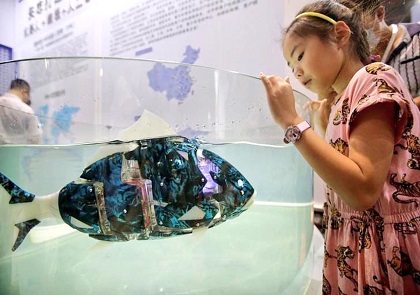
China has launched an initiative, called ‘Made in China 2025’ to upgrade its industries. They hope that by 2025, they will be the world leader in intelligent manufacturing and smart factories.
Attendees of the World Robot Conference were surprised that many of the robotics manufacturers had debuted robots that were seemingly inspired by nature.
The new design frontier indicates that robotics engineers are trying to figure out how to design robots that are more flexible, speedy, responsive, and intelligent. One of the robots that made journalists curious was named the BionicFlyingFox.
The BionicFlyingFox is an intricately designed robot that mimics the flight of a bat. It has been designed with intelligent kinematics and can replicate unbelievable flying maneuvers. A motion tracking system ensures that it doesn't hit any walls or veer off and crash. This makes the robot semi-autonomous, but needless to say, one day it will likely fly on its own.
The robot was created by Festo, a German multinational industrial control and automation company. They produce and sell pneumatic, electrical control and drive technology for factory or process automation.
While their BionicFlyingFox robot is impressive to look at, it’s a statement of how well-designed their other industrial technologies are. Creating agile robots is imperative to the future of robotics. In biomedical engineering, we are already seeing the rise of robots that can perform maneuvers humans are unable to replicate. As robots replace the repetitive jobs that humans have done in the past, ensuring robots are as agile and flexible as possible is important work.
And they need to be lightweight in the future as well — the fox only weighs 580 grams. And it’s getting smarter. Engineers are utilizing motion tracking systems, which are hooked up to a computer that evaluates and learns from the data of each flight. The robot can aptly alter its course on each individual flight based on the findings of its previous flights.
It seems that the time of flexible, agile, autonomous, intelligent robotics has truly come.
Works Cited
Kirstel, Evan. “Evan Kirstel (@Evankirstel).” Twitter, Twitter, 4 Sept. 2018, twitter.com/evankirstel/.
“Our Favorite Robots From China's 2018 World Robot Conference.” Interesting Engineering, 20 Aug. 2018, interestingengineering.com/our-favorite-robots-from-chinas-2018-world-robot-conference.
- Details
- Written by: Quintus Potgieter
In July 1969, Neil Armstrong became the first man to walk on the moon as part of the Apollo 11 mission. In August and September 1977, NASA launched Voyager 2 and then Voyager 1 — space probes with the primary purpose of exploring the outer reaches of the galaxy. Voyager 2 is still the only space probe that has ever visited Uranus and Neptune. The Voyager spacecraft are still exploring outer space 41 years later.
What do the Apollo missions and the Voyager spacecraft have in common? The modern smartphone outranks the computer technology that made those space explorations possible. It took the Apollo 11 missions only four Apollo Guidance Computers (AGC) to get man to the moon.
Even more impressive, it was a woman who got man to the moon (sort of). Margaret Hamilton, a systems engineer who wrote the code that defined the Apollo 11 mission, was awarded the Presidential Medal of Freedom by Barack Obama in 2016. The code that was written, when stacked, stood taller than Hamilton.

However, as pointed out by Popular Mechanics, at the time of the missions, the computers utilized were ten years ahead of their time. This was before the microchip ever existed.
IBM assisted NASA in creating the computer infrastructure that facilitated the Apollo missions. Rhuaridh Marr, from Metro Weekly writes:
“The Apollo Guidance Computer directing the rocket was an incredible achievement for NASA -- it was the first computer system to provide real-time information about the spacecraft as it navigated, detailing important stats and allowing for automatic navigation.”
Nonetheless, by the time the Apple II personal computer came out, the technology that guided astronauts through space was outperformed. However, it is undeniably true that NASA ran an entire space exploration program from start to finish with less technology than what’s inside an iPhone. The Apollo Guidance Computer only had four kilobytes of RAM, where modern-day laptops have eight gigabyte RAM sticks. An Apple iPhone’s processor runs at 150MHz, whereas the Apollo computer ran at 1MHz. And they only had 32 kilobytes of storage capacity. Marr writes:
“The Apollo computer took a spacecraft to the moon and back, and it’s 150 times less powerful than a processor that knows whether you’re walking or driving.”
You can now access the exact code that was used on the command and lunar modules that made the Apollo missions possible here.
Not done yet
NASA is not done sending probes into space just yet. They have just launched a new probe that is set to ‘touch the sun’.
NASA is sending a probe to fly into the low solar corona. It will comb through coronal plasma and magnetic fields that appear to facilitate the acceleration of energetic particles nearby the sun.
The Parker Solar Probe will be the fastest spacecraft in history. It will also get seven times closer to the sun than the previous record holder, the Helios B. It is expected to get within 3.9 million miles of the sun’s surface. It will orbit the sun 24 times, capturing data that will be pored over down here on earth.

A lot of the information that will be perused will be the data generated on the way to the sun. While researchers are hopeful that data can be generated while the probe is in close proximity to the sun, they say that might not garner any results. The strongest focus will be put on understanding solar wind.
At its optimum speed, the Parker Solar Probe will orbit the sun at 430,000 miles per hour. It will experience temperatures of 2,500 Fahrenheit (1,400 degrees Celsius). A carbon composite engineered shield is what protects the probe from the scorching temperatures of the sun. It also employs a white, reflective alumina surface layer that lessens the absorption of heat. The craft is powered by photovoltaic solar arrays.
The probe will hopefully report back on which segment of the sun is responsible for heating up and distributing the solar wind that is emitted and sent towards earth and other planets. It was engineered by Johns Hopkins University’s Applied Physics Laboratory.
Works Cited
Grossman, David. “The One Way Apollo Computers Still Beat the iPhone.” Popular Mechanics, Popular Mechanics, 15 Feb. 2018, www.popularmechanics.com/space/moon-mars/a25655/nasa-computer-iphone-comparison/.
“To the Moon and Back on 4KB of Memory.” Metro Weekly, 7 Dec. 2017, www.metroweekly.com/2014/07/to-the-moon-and-back-on-4kb-of-memory/.
- Details
- Written by: Quintus Potgieter
The automation of mining operations is inevitable. Mining is a high stakes business with costly equipment and a small margin for operational error. Thanks to the digital disruption of the sector, mines are being made safer, more efficient, and productive.
Not many underground mining operations are automated. However, this will soon change. The Syama Mine in Mali is tipped to be the first fully-automated underground mine in the world. Resolute Mining, an Australian company, currently owns the gold mine.
The company intends to completely reorganize the mine with new technologies. An automated fleet of driverless trucks will drive the product around, and a remote monitoring team will be watching everything closely to ensure the mine is working at peak efficiency. Loaders and drills will be automated, too. Sensors will monitor the entire process providing real-time analysis of the health of the operation, and more.
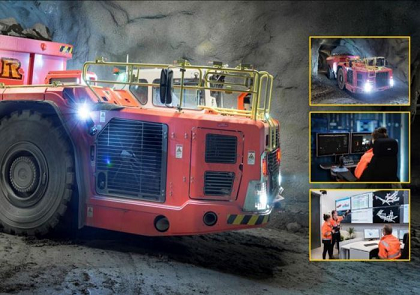
As a result, the mine will not need to recruit or pay any drillers.
Is this a good thing or a bad thing? Africa is a prime candidate for the leapfrogging of technologies and is still a resource-rich continent. Many African workers rely on being employed as drillers in mines so they can put food on the table at home. Would the automation of these mines lead to job losses?
Resolute Mining, the company behind automating the Syama Mine, has said that not many jobs will be lost. And they are advocating for the upskilling of their workers.
What might it mean for the future of the mining industry? How might it disrupt a mining economy? How many jobs will be lost? Resolute Mining managing director John Wellborn says the company has an answer to these pertinent questions. He told ABC News:
“Rather than focusing on putting in wells in local villages and handing out school books, we’re focused on upskilling, training and empowering the local workforce.”
The automation will also save the mining company money — it will slash mining costs by 30 percent. There is also less chance of loss of life as well.
“Automation is often seen through the prism of a vehicle factory where you blow the whistle and sack 200 of your assembly line workers and replace them with robots or a large group of sewing machine operators who can be replaced by a machine. I often get asked about the political impacts of automation in Africa, with the perception that governments will be concerned we’re laying off workers. What we’re doing has very little to do with reducing workforce - it has everything to do with efficiency and productivity.”
The employees of the Syama Mine are waiting with bated breath. They are interested in seeing how automation might change or improve their working conditions, and whether it will mean prosperity for Resolute Mining.
Goldmine blues
Further afield in South Africa, a gold mine is ready and prepared to let a large number of employees go. While a mining surge has been observed in the country, gold production is down. Gold Fields has indicated it must let 1,100 of its permanent staff and 460 of their contractors go at its South Deep mine.
According to Times Live, the mine employs 3,614 full-time employees and 1,940 contractors. The mine had purportedly spent USD 20.2 million more than it had earned in the second quarter alone. Gold Fields has lost USD 275 million in South Africa.
It is not only Gold Fields that is actively pursuing a retrenchment scheme; Impala Platinum is to let 13,000 employees go, and will close 5 of their mines. Gold Fields CEO Nick Holland has previously said that the way gold has been mined for the last 100 years is not how gold will be extracted in the next 100 years.
South Africa seems to be significantly behind in leveraging new mining technologies and keeping the businesses afloat. It’s a widely held belief that Internet of Things technologies are necessary for the sector; the one thing not being said is whether miners and workers will receive upskilling work.
The mines may implement new technology, but the redundant workers might not be aptly skilled to continue working in the mine as it changes. The question remains: What will become of the uneducated driller that currently works at the mine? The answer: Upskilling.
The digitization of industries in South Africa may further intensify an already worrisome jobs crisis. Associate Director of Strategy and Operations at Deloitte, Jan-Adriaan du Plessis, in a discussion on South African radio, said:
“If you look at history, technology advancement, generally, creates more jobs than it destroys. That’s what the studies tell us. The focus should not be on trying to save as many jobs as possible, but to really upskill and repurpose jobs in the required areas.”
Nonetheless, with mining unions trying to protect their workforce, the loss of jobs in an already highly unemployed society does not make for an optimistic outlook. What is clear is that mining employees of past, present, and future, must upskill as much as possible and be ready for the future of mining on a continent that is ready to embrace new technologies with open arms.
Works Cited
Lucas, Jarrod, and ABC Goldfields. “Aussie-Owned African Gold Mine to Be World's First Robot-Only Underground Digs.” ABC News, Australian Broadcasting Corporation, 8 Aug. 2018, www.abc.net.au/news/2018-08-09/worlds-first-fully-autonomous-underground-mine-in-africa/10090932.
Roux. “The Future of Mining, South Africa's Lifeblood (and Employer of 500 000 People).” 702, 17 Apr. 2018, www.702.co.za/articles/300105/the-future-of-mining-south-africa-s-lifeblood-and-employer-of-500-000-people.
Seccombe, Allan. “Gold Fields to Cut up to 1‚560 Jobs at South Deep Mine.” Times LIVE, Sunday Times, www.timeslive.co.za/sunday-times/business/2018-08-14-gold-fields-to-cut-up-to-1560-jobs-at-south-deep-mine/.
- Details
- Written by: Quintus Potgieter
The casting of concrete is becoming smarter and smarter by the day.
The digitization of concrete casting has revolutionized the way both architects and engineers do their jobs. It is now possible to 3D print concrete in novel geometric patterns that defy belief and produce artistic results. However, it’s not only for aesthetically pleasing results — the concrete slabs are more lightweight, too.
At their thinnest point, these ‘smart slabs’ are only 20 millimeters thick, making them far lighter than a traditional slab of concrete.

Digital fabrication technology can ensure that a casted slab of concrete holds the structural rigidity of concrete, while showcasing geometrical shaping only a 3D printer and the additive manufacturing process can produce.
Currently, these slabs are being used to build a concrete roof. A three-storey home project, known as the DFAB House, is being built in Switzerland by science, engineering and mathematics scholars from ETH Zurich University.
The process relies heavily on the digital fabrication — the architectural measurements are plugged into the computers, and then the robots begin building. Computer models, CAD software (of which the team have apparently coded their own) and prototyping assists with the fabrication of the elements needed to build the smart structures. CNC milling and 3D printing then finishes the process.
Eleven smart slabs are printed into 7.4 metre long, 78-square-metre segments, individually, and then, joined together on-site.
The project is purportedly the first full-scale architectural project using 3D printed sand printing techniques.
The arrival of digital fabrication means the parts necessary for construction can be produced on demand. This is much quicker than relying on prefabricated parts. In construction, modular fabrication techniques are getting better than prefabrication ever was. Digital technologies and cutting-edge industrial manufacturing equipment makes the process much quicker and ensures the output is of higher quality. On-site fabrication will become the new normal.
Andrew Watts, CEO of Newtecnic, an engineering technology firm, spoke to The Engineer about digital fabrication, and is of the opinion that it is the future. He told the publication:
“Prefabrication is a nice idea, but it doesn’t provide the flexibility needed to put things together where you have a lot of different companies and contractors working together on the same project. There’s often a need to put things together in a sequence where were you don’t just turn up with something, install it and it’s finished. You need to add sequential components later on while there are lots of other people doing work around you.”
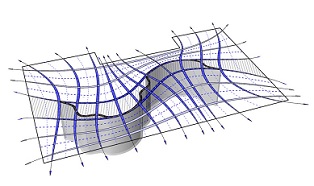
Watts believes robots and drones will be familiar sites on-site as well. The digital world and its mechanisms will unquestionably take over the heavy lifting and monitoring on-site in the future.
Works Cited
“The Smart Slab - 3D-Printed Formwork for a Radical New Concrete Aesthetic.” Dbt, dbt.arch.ethz.ch/project/smart-slab/.
Wade, Andrew. “Digital Builds: The Technology Taking Construction to the next Level.” The Engineer, 7 Aug. 2018, www.theengineer.co.uk/digital-construction-technology/.
- Details
- Written by: Quintus Potgieter
The war against plastic is gathering force.
Environmentalists have made it clear: the continuing use of plastics bodes badly for Planet Earth. It is gratifying to learn that the initiatives to eliminate or reduce the use of plastics are gathering speed and popularity. For example, Starbucks aim to remove plastic straws from their global stores by 2020. Some restaurants have taken the plunge and are offering customers stainless steel or cardboard straws.
The world’s oceans are filling up with plastic and this can no longer be ignored. Consumers, for the most part, are woefully unaware. Others are indifferent to the knowledge that the array of plastics they use, and then discard, often end up in the ocean. If eradication isn’t on the table, perhaps a better use for the discarded plastic exists — a permanent home other than landfill or the ocean.
Engineers have been busy devising a solution.

200,000 plastic bags and 63,000 glass bottles that would have otherwise been discarded in a landfill, have been used in the laying of a road in Craigieburn, a suburb in Melbourne, Australia.
According to BBC News, there are 40 million kilometers of roads in the world. In most third world countries, road infrastructure could mean continued industrialization and more prosperity. And if plastic could be recycled and used for road infrastructure globally, that could really assist in finding a place for waste worldwide.
What is the best way to recycle plastic and re-use it in road-building?
Engineers have come to the rescue
Scottish engineering start-up MacRebur has suggested turning plastics into pellets and then mixing them into tar mixtures.
Engineer Toby McCartney told BBC:
“How can we solve two world problems? The poor quality of roads we drive on and the waste plastic epidemic that we all see in the world today. We use waste plastics to add into an asphalt mix to create a stronger, longer lasting, pothole free road.”
He was initially inspired by a practice he saw forming in India. People would throw waste plastics into potholes and burn the plastics to plug the pothole.
To improve on the system, his engineering startup began to make plastic pellets out of waste plastics. The pellets are mixed with bitumen and it results in a stronger road that needs less maintenance.
According to Gulf News, in 2017, already 100,000 kilometers of road in India were built using recycled plastic waste. A World Economic Forum report had previously underestimated the number to be 33,768 kilometers.
Remodeling plastic pellets out of recycled plastic waste is a more recent initiative. Unfortunately, McCartney is keeping the company’s method a secret. But engineering genius is broad and engineers determined – a range of approaches to recycling plastics will no doubt emerge.
Safer roads and a use for plastic waste will indeed be another couple of feathers in the caps of creative engineers at work.
Works Cited
Report, Gulf News Web. “Watch: Building Roads from Plastic Waste in India.” GulfNews, Gulfnews, 12 Nov. 2017, gulfnews.com/news/asia/india/watch-building-roads-from-plastic-waste-in-india-1.2122745.
bbcnews. “Can Plastic Roads Help Save the Planet? BBC News.” YouTube, YouTube, 25 Apr. 2017, www.youtube.com/watch?v=cHWYoDKYnQo.
- Details
- Written by: Quintus Potgieter
Origami is the Japanese art of folding paper into decorative shapes and figure.
Its use of geometrical shapes makes it a curious art form — one that could inspire mechanical engineering design.
According to Northeastern University researcher Soroush Kamrava, the future solar panels and air bags will be informed by origami designs. The research includes utilizing metamaterials (plastics, metals and rubber) to create complex designs that could produce stronger and more functional products.

Engineers are figuring out how to 3D print origami-inspired structures and introduce new, novel products, but also updated prototypes of products with new structures; such as airbags or solar panels. The researchers are testing out various designs and experimenting with several different angles on everyday shapes.
“Our work is a combination of science and art. So sometimes inspiration comes from a museum, old architecture, or just floor tiles,” says Kamrava.
They are looking to redefine geometry on some of the most renowned engineering designs. The researchers use an origami printer to print out the outline of the folded shape they wish to create. They then fold a paper prototype of what they intend their final print should look like, while working out whether a metamaterial prototype will be structurally sound.
Once they are happy that a geometric shape can sustain the relevant stresses, the engineers begin their print of several parts. They employ metal hinges to get the pieces into the relevant origami shape. The benefit of the origami inspired shapes is that they could be repositioned into new shapes. Creating foldable structures for industries like aerospace could be beneficial, as they’re privy to utilizing deployable structures.
Nothing new under the sun
The practice of using origami as inspiration for engineering design is not altogether new. A year ago, the Brigham Young University developed bulletproof ‘origami kevlar’. They created an origami-based deployable ballistic barrier for police safety during dangerous or hostile situations where gunfire is likely.
The engineers met with federal agents that regularly used the current shields and asked how they could improve the design, to help them safely do their jobs in hostile situations.
BYU Adjunct Professor of Mechanical Engineering, Terri Bateman said:
“Current products out there are about 90 pounds - that’s pretty heavy for one person to carry. And, it only protects one person.”
The engineers worked on reducing the weight to 50 pounds and making it possible to protect two people at once. They used a crease pattern, enabling the kevlar to be collapsible.
Not only is the kevlar aesthetically pleasing, but it also works.
Origami underwater
Engineers at the Wyss Institute at Harvard University have designed a 3D printed, 12-sided origami trap that can be used in the ocean to capture marine life without harming it. The way in which the trap is constructed allows it to fold over the marine life without asserting too much force.
The marine life is then studied by marine biologists. They have dubbed the device the Rotary Actuated Dodecahedron (or RAD). The engineers have pressure-proofed the trap to withstand pressure at 11 kilometers (6.83 miles) deep.
The engineers say their design is well suited for aerospace as well.
Brennan Phillips, a University of Rhode Island professor of ocean engineering attached to the project said:
“We believe that the geometric design can be used for things like deployable solar arrays and mirrors in space, as well as for nanoscale manufacturing. There are likely a lot of other potential applications, but using this high-tech approach to study deep-sea animals is really the best thing, in my opinion.”
A trend of flexible, soft, skin-like exoskeletons for robots and origami-inspired geometrical shapes for product design is currently playing out in the mechanical engineering industry, producing some of the most complex engineering projects the industry has seen for quite some time.
Works Cited
“How Origami Might Reshape the Future of Everything.” Phys.org - News and Articles on Science and Technology, Phys.org, phys.org/news/2018-08-origami-reshape-future.html.
“How Origami Might Reshape the Future of Everything.” News Northeastern Schools Are Safer than They Were in the 90s and School Shootings Are Not More Common than They Used to Be Researchers Say Comments, news.northeastern.edu/2018/08/02/how-origami-might-reshape-the-future-of-everything/.
“URI Engineer: Origami-Inspired Device Enables Easy Capture, Release of Delicate Underwater Organisms.” URI Today, today.uri.edu/news/uri-engineer-origami-inspired-device-enables-easy-capture-release-of-delicate-underwater-organisms/.
- Details
- Written by: Elyse Simich
A new ‘quantum battery’ could charge devices in less than a second, making your uncharged phone a thing of the past.
The University of Adelaide’s newest Ramsay Fellow Dr James Quach is currently researching this new technology. His previous experience in quantum mechanics could help him turn this theory into reality.
He said that while ordinary batteries take the same amount of time to charge no matter how many you have, quantum batteries should charge faster in larger quantities.
“If one quantum battery takes one hour to charge, then two would take 30 minutes, three would take 20 minutes, and so on. If you had 10 thousand batteries, they would all charge in less than a second.”

While it may seem counterintuitive, this is possible due to a feature of quantum mechanics called entanglement.
“Quantum mechanics deals with interactions at the very smallest of scales, at the levels of atoms and molecules – at this level you get very special properties that violate the conventional laws of physics,” Dr Quach said.
“One of those properties is ‘entanglement’. When two objects are entangled it means that their individual properties are always shared – they somehow lose their sense of individuality.
“It’s because of entanglement that it becomes possible to speed up the battery charging process.”
The University of Adelaide green-lit this project in the hope that these quantum batteries could eventually replace their conventional counterparts in small devices such as mobile phones, watches and computers. However, these batteries require very specific conditions in order to be created.
“Entanglement is incredibly delicate, it requires very specific conditions – low temperatures and an isolated system – and when those conditions change the entanglement disappears,” said Dr Quach.
“With the support of the academic community in Adelaide, interstate and globally, I aim to extend the theory of the quantum battery, construct a lab conducive to the conditions needed for entanglement, and then build the first quantum battery.”
“The long-term aim is to scale up, to build bigger batteries which will support renewable energy technologies by making it possible for continuous energy supply no matter the weather conditions – rain, hail or shine,” Dr Quach says.
- Details
- Written by: Quintus Potgieter
Manufacturing equipment requires maintenance; efficient machines to get a manufacturing job done.
With the arrival of the Industrial Internet of Things (IIoT), modern sensors are able to observe every nook and cranny of a manufacturing plant. Traditionally, the responsibility of improving efficiencies and maintaining the operations in manufacturing was down to the technicians and engineers attached to the plant. Increasingly, however, they are being replaced by PdM (predictive maintenance) and IIoT.
Previously, manufacturing relied on preventative maintenance: technicians would ensure that everything was well oiled and working as it should, until, of course, a fault was detected and maintenance was required. This school of thought is now giving way to predictive maintenance - where faults can be predicted before they cause the equipment to hiccough, allowing for preemptive corrections. In essence, predictive maintenance enables plants to forecast the failing of a piece of equipment and it therefore reduces down-time.

But is predictive maintenance the be-all and end-all? Technicians and engineers need to be on call at these plants in case they observe — or even smell — something that can bring manufacturing processes to a halt. Or do they?
Vice President of Product Strategy at RRAMAC Connected Systems, Tom Craven, believes that the worker, familiar with all of the kinks, rattles and smells of a manufacturing plant can be replaced by predictive maintenance software. He told Design News that a common rattle can now be diagnosed by the software and sensors:
“That rattle that the knowledge worker hears has other symptoms that can be picked up by a vibration sensor. The predictive maintenance system is a combination of sensors and machine learning. The knowledge worker is responding to his five senses and he has the experience to know what to do to correct the problem. The machine learning feeds the system data that knows what to do to correct the equipment.”
The main benefit for companies using predictive maintenance is reduced downtime. Additionally, however, remotely-located devices can be used to diagnose and even solve problems that come up. The result: more efficient and cost-effective processes. In the past, engineers would have to visit remote plants to diagnose and fix machinery problems – an expensive exercise.
Data collection, pre-processing, early fault detection, fault detection, time to failure prediction, maintenance scheduling and resource optimization are all of the things a company can look forward to when they utilize predictive maintenance. There is a more immediate situational awareness of how components are faring during manufacturing operations with predictive maintenance. Craven concludes:
“The machine learning is artificial intelligence applied to a machine. What happens over time is you record data, which includes multiple vibration points, motor current and temperature. You look for anomalies. In some cases it is obvious - motor current issues are easy to associate with a failure. Where data analysis become more complex, is when an anomalous vibration may be normal. Vibrations may vary during the cycles of the machine. What happens in these cases is you look at multiple variables and run a mathematical calculation that can flag the anomaly.”
Whilst artificial intelligence may still need some fleshing out and perfecting, predictive maintenance, assisted by AI software, is already saving companies money and time and increasing productivity. The future is predictive maintenance assisted by the connected sensors of the Industrial Internet of Things.
Works Cited
Spiegel, Rob. “Predictive Maintenance Is Replacing the Plant's Retiring Knowledge Worker.” Design News, 1 Mar. 2018, www.designnews.com/automation-motion-control/predictive-maintenance-replacing-plant-s-retiring-knowledge-worker/186322103658317.
Ulbert, Sebastian. “The Difference Between Predictive Maintenance and Preventive Maintenance.” Field Service Management Software, www.coresystems.net/blog/the-difference-between-predictive-maintenance-and-preventive-maintenance.
- Details
- Written by: Quintus Potgieter
The head of states of the BRICS nations (Brazil, Russia, India, China and South Africa) have met for the 10th BRICS Summit in Johannesburg, South Africa. Topics on the agenda were energy, manufacturing, technology, industrializations, and more. But most importantly, deals were being made.
China will be giving US$14.7 billion in investments to South Africa for its advancement. The partnerships across the nations are all part of the BRICS Partnership for the New Industrial Revolution (PartNIR). On top of this, South Africa’s railway and energy utility will be given US$2.8 billion in Chinese loans to assist these state-owned entities overcome the short-comings they have faced in the last few years.
The Summit is an important event for those countries involved as they look to improve the conditions in their countries through technological advancement. President of South Africa, Cyril Ramaphosa, in his official remarks at the BRICS Business Forum in Sandton on Wednesday 25 June 2018 said:
“Quantum leaps in technology and innovation present enormous opportunities for growth, development and human progress.”
President of China, Xi Jinping, is making the deals with these affiliated nations to ensure his Belt and Road Initiative (BRI) continues revitalizing China.
The initiative involves a US$1 trillion plan to revolutionize manufacturing and construction in China and foreign investment is extremely important; 60 percent of the money to be generated will be coming from outside of China.
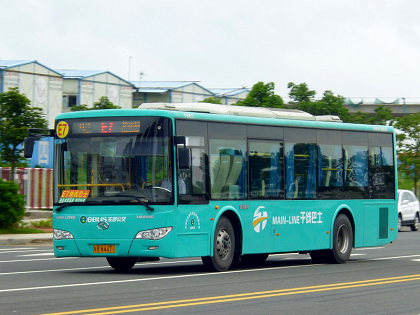
A (clean) change is coming
A positive spinoff of the current investments into manufacturing and industrialization in China has driven down the costs of solar panels. They are embracing solar in areas where pollution is posing a health risk to the people of China.
In densely populated cities, governments are realizing they have to turn the tide on fossil fuel technologies...and quickly. To confront the pollution generated by public transport China has invested in Battery-electric buses (BEBs).
According to Vox, buses accounted for 20% of the air pollution in Shenzhen, China, despite accounting for only 0.5% of the vehicles. Since 2012, all 16,359 buses in Shenzhen have become electric. Not surprisingly, since 2016 the speed at which the electrification has occurred has sped up - as the world calls for cleaner, more renewable forms of powering the world.
The electric buses ensure that 12 million people go from Point A to Point B every day. In 2017 Shenzhen became the world’s first city with an all-electric bus fleet. The city wants the same to happen to their fleet of taxis. This would mean converting 17,000 taxis - their goal is to have this completed by 2020.
China’s growing population with a large number of people living in urban areas highlighted the problem of using diesel-powered buses in the cities. The Chinese government began by swiftly subsidizing the 350,000 BEB (Battery-electric buses) in 2014/2015.
Subsequently, the buses make up 17 percent of China’s bus fleet.
The vehicle manufacturer behind the majority of the e-Buses is a company named BYD. Founder and chairman of BYD told Strait Times:
“China is now facing large-scale urbanisation, coupled with widespread car ownership. Urbanisation causes us to suffer from big city diseases such as traffic congestion and air pollution. BYD uses electric vehicles to help tackle air pollution and Skyrail to solve the problems of traffic congestion. It’s imperative to carry out the electrification of public transport. China is leading the world in this area.”
Ever since China led the charge on using electric buses, the rest of the world is playing catch up. BYD is hoping to send a fleet of buses to Singapore. Dutch company Arriva has also become one of Europe’s chief suppliers of electric Volvo buses.
China is also lobbying to become a member country of the International Solar Alliance. The alliance, formed upon the signing of the Paris Declaration (the agreement to prevent further global warming), is dedicated to further reducing the cost of clean energy technologies. It seems that China is quite serious about reducing the number of fossil fuel technologies they utilize.
Works Cited
Fabricius, Peter. “China's Xi Promises $14.7bn in Investments in South Africa.” Daily Maverick, Daily Maverick, 25 July 2018, www.dailymaverick.co.za/article/2018-07-24-chinas-xi-promises-14-7bn-in-investments-in-south-africa/.
Roberts, David. “China Made Solar Panels Cheap. Now It's Doing the Same for Electric Buses.” Vox, Vox, 17 Apr. 2018, www.vox.com/energy-and-environment/2018/4/17/17239368/china-investment-solar-electric-buses-cost.
StraitsTimesOnline. “Shenzhen Leads the Way in Switch to Electric Buses.” YouTube, YouTube, 26 Jan. 2018, www.youtube.com/watch?v=hcSu92RfT1s.
- Details
- Written by: Quintus Potgieter
The world will be descending on South Africa to compete in a car race, the Sasol Solar Challenge. It is a race that brings a host of engineering disciplines together; a competition which nurtures innovation.
To win, teams ensure their solar cars are running at peak efficiency. They race over 2,500 kilometers (1553 miles), traversing a large swathe of the South African landscape.
2018’s competition will be the biggest Solar Car Challenge yet, with 15 international teams taking part. An encouraging sign for South Africa is that the number of local teams entering is steadily growing. The four South African teams participating in this competition are the Tshwane University of Technology, the North West University, the Central University of Technology and a team named Sonke.
The competition will start in Pretoria on 22 September and finish in Stellenbosch on the 29th of September 2018. This year marks the tenth anniversary of the challenge.
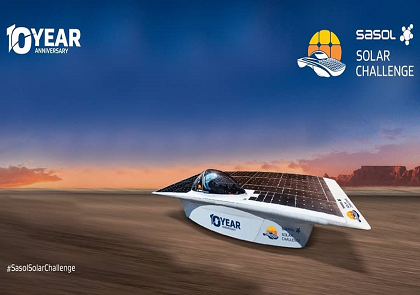
Sasol says the epic event tests ‘the limits of energy innovation’. The logistics of keeping a solar car running is one of the more challenging parts of the competition. One of the difficulties with solar panels is that with the obscuring of one panel, power from them all is lost.
The technical prowess of engineering teams will be realized as all the solar power must be limited to a four meter squared array of solar panels. The competition historically utilized six meters, but the engineering teams now have to show what they are made of with these new parameters.
Mechanical engineers and electrical engineers do a lot of the heavy lifting, but other fields of engineering are also part of the challenge to build the fastest solar powered car.
The Dutch Team, Nuon, is the reigning champion. They are flying down to South Africa to defend their title, but will be up against the South African teams on their home turf.
One of the South African teams the Dutch will be looking out for is North West University (NWU). They recently took part in the Bridgestone World Solar Challenge in 2017. They were the only African team to compete, and finished second in the Adventure Class of the competition. The Adventure Class is non-competitive and is more about the art of building a solar car, but they still managed to pull off a 2nd place win.
In 2014, they came fourth, but set the South African record for the longest distance in a single day. In 2015, they went to Australia and were one of two teams to represent South Africa. They became the first team in Africa to cross the finish line that year and were very proud to have beaten MIT. In 2016 they again participated and came fourth again.
In 2017 NWU, for the first time, used 3D printed parts for their new solar car build. This meant that any hobbyist who had a 3D printer could assist on the project. They are now taking - what they have called the Batmobile – to the Solar Car Challenge which kicks off in Pretoria in September.
The Sasol Solar Challenge director Winstone Jordaan said:
“The Sasol Solar Challenge inspires students to develop new technologies by creating a competitive environment. They contribute to core research on solar technology, including the manufacturing of solar cells, their casing, converters, controllers and electronics. The research done by solar teams has become invaluable to the energy industry.”
Works Cited
“Good Luck to Local Solar Car Teams! Students Prep for 2018 SA Solar Challenge.” Wheels, 19 July 2018, www.wheels24.co.za/News/Gear_and_Tech/good-luck-to-local-solar-car-teams-students-prep-for-2018-sa-solar-challenge-20180719.
“Solar Car.” Bridgestone World Solar Challenge 2017 | Solar Car | Engineering | NWU | North-West University, engineering.nwu.ac.za/solar-car/bridgestone-world-solar-challenge-2017.
- Details
- Written by: Quintus Potgieter
As the world moves to more renewable methods of generating electricity and cities become smarter, smart solutions to creating energy through innovation are going to be necessary.
A video featured on Interesting Engineering’s Telegram page featured a new vertical axis wind turbine that promises to capture wind specifically generated near inner cities and coastlines around the world. The turbine in question is the ENLIL vertical axis wind turbine, also known as a VAWT.
The engineering company behind the design of the VAWT is Devecitech. The turbine can be placed onshore ocean-side and capture some of the winds blowing from the sea landward, but there is another area of untapped potential these turbines could fit into: roads.
The movement of vehicles creates air that could power the turbine. Fast and continuous flow of traffic on roads can create a perfect environment for the turbine. Wind generated from moving vehicles and natural winds on highways will keep the turbine running. Moreover, the solar panels positioned atop the turbine capture more electricity.
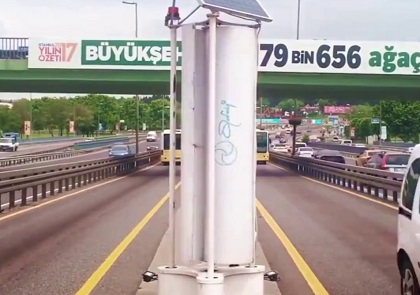
The engineers attached to the project say that the turbine is capable of generating 1KW/h every day - the equivalent of powering two households.
The VAWT also has built in sensors that will measure the carbon footprint, the city’s temperature, humidity, and more. Meaning, the turbine can be a good addition to the interconnected smart city of the future. All of the data and analytics will be accessible via an app.
The turbine can help create electricity for the road infrastructure that requires electricity, such as: traffic monitoring systems, toll gates, toll gantries and the streetlights.
Effective?
The Chinese are questioning the benefits of vertical axis wind turbines in their cities.
Research company, IDTechEx Research, has performed a study on ‘Electrically Smart Roads 2018-2028’. They report that VAWT setups are still at too high a price point and foresee that solar will be preferable as photovoltaic cell prices continue to drop.
Raghu Das, CEO of IDTechEx says:
“The price gap between the ubiquitous polycrystalline silicon solar cell and the much more efficient single crystal silicon is narrowing. That means the road furniture such as bus shelters and smart gantries will likely go for more solar than adding wind power in many cases because wind power needs a lot of maintenance and its price is not dropping as rapidly.”
Das believes that the H shaped VAWTs are also too loud for residential areas. The vibration the turbines undergo generates a noise.
Dr Hiromichi Akimoto, a Professor of Engineering at Osaka University Center for the Advancement of Research and Education Exchange Networks in Asia, taking to a question and answer website Quora, explains why VAWTs have not been historically utilized despite the technology being available:
“Getting high efficiency of VAWT in a small scale is difficult. It is because the performance of VAWT is very sensitive to the lift/drag ratio of a blade and it is not good in the low Reynolds number condition of small applications. Another factor is its peaky power curve (power vs tip-speed ratio). Because of its narrow peak, keeping the optimum point is difficult for a small VAWT in an urban area where fluctuation of wind is significant.”
Consequently, most VAWT setups are just futuristic experimentations for now. More research and development is going into VAWT all the time; the more commercially known, utility scale, HAWT (Horizontal Axis Wind Turbine) will remain what most people usually think of when thinking about wind power.
Works Cited
“Enlil Vertical Axis Wind Turbine.” YouTube, YouTube, 29 May 2018, www.youtube.com/watch?v=MjgIYJ_9aIM.
“Top 16 Telegram Channels for Tech and Engineering Enthusiasts.” Interesting Engineering, 2 May 2018, interestingengineering.com/top-16-telegram-channels-for-tech-and-engineering-enthusiasts.
“Why aren’t Vertical-Axis Wind Turbines more popular?

- Details
- Written by: Quintus Potgieter
Volkswagen came, saw, and conquered. The Volkswagen ID R has broken the record for the time it takes an electric vehicle to climb a hill. It is a feat of electrical engineering and it hints at the future of electrical vehicle engineering.
The competition is named the Pikes Peak International Hill Climb. It is a 12.42 mile race with 156 turns, climbing up to 14,000 feet above sea level. It has been in existence since 1916.

The VW team challenged the PIKE record on June 24th and emerged with a record breaking hill climb. What makes the hill climb unique is that combustion engines struggle more than the electric motor. The combustion engine begins to struggle as soon as the oxygen thins the further above sea level the car climbs. Battery-powered cars, however, have no such issues.
Volkswagen unveiled their first fully electric car in October 2017. They then announced that they intended taking it up the Pikes Peak International Hill Climb. They predicted that they would break all previously set records for the fastest electric vehicle hill climb.
Technical Director at Volkswagen Motorsport Francois Xavier Demaison says:
“The idea is to show our capability in doing electric cars. Especially for racing. It’s a racing car, it has to be as fast as possible. So, technically, it has to be light, and drivable...and fast. The idea of the IDR is to have a motor in the front and a motor in the rear.”
The car is a battery with four wheels, says Demaison. It is powered by 3,500 cells that are connected to two motors. It can push out 680 horsepower. The car goes from 0-60 miles per hour in 2.25 seconds.
The record
Volkswagen’s ID R managed a time of 7 minutes and 57 seconds on the 24th of June 2018.
This car suggests that VW is moving towards implementing the electric. And because the car is electric, the driver has to adapt to a car that doesn’t behave like one with a traditional combustion engine.
Romain Dumas was the race car driver who won VW its new record, but before the record was set he said:
“I’m getting more used to the visibility with the speed. You have to readapt your style, you have no gear, you have no noise. The only kind of feeling you have is the speed.”
Most amazingly the previous record was set in 2013 by a Peugeot 208. The Volkswagen ID R beat the previous record of 8 minutes and 13 seconds by a full 11 seconds. The engineers have promised that they can refine their vehicle and improve their times in the near future.
Works Cited
“Volkswagen I.D. Electric Racer Blasts To New All Time Pikes Peak Record.” CleanTechnica, 25 June 2018, cleantechnica.com/2018/06/25/volkswagen-i-d-electric-racer-blasts-to-new-all-time-pikes-peak-record/.
“Volkswagen I.D. R Pikes Peak - 2018 WORLD RECORD 7'57’ | HOW IT'S MADE Race Car.” YouTube, 24 June 2018, youtu.be/4uZLQvuwsgg.
